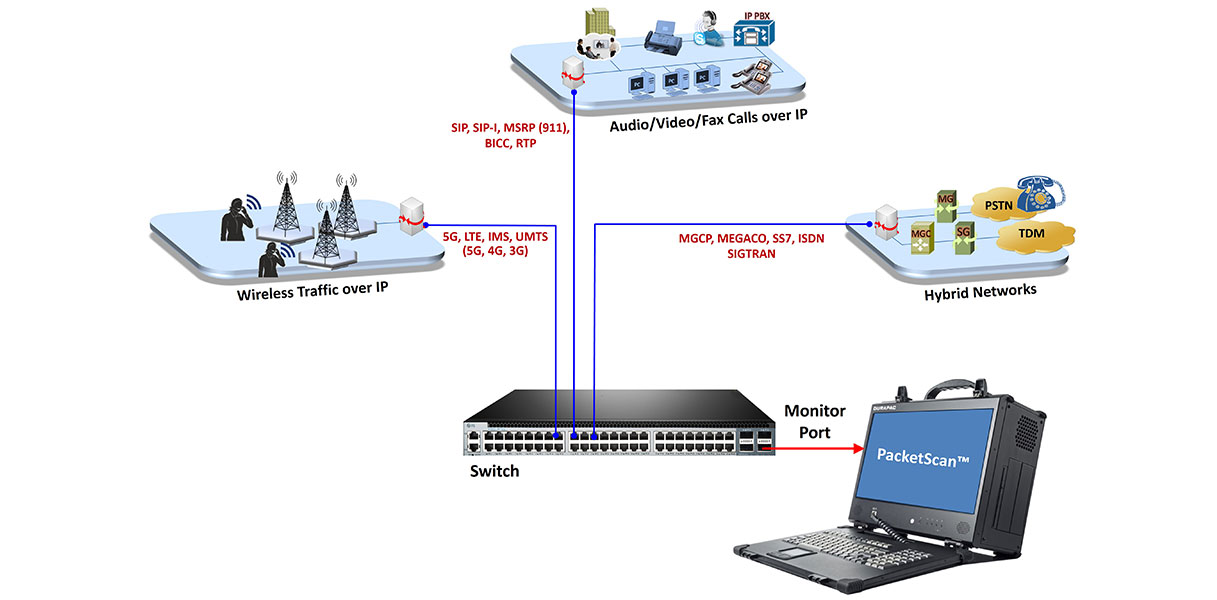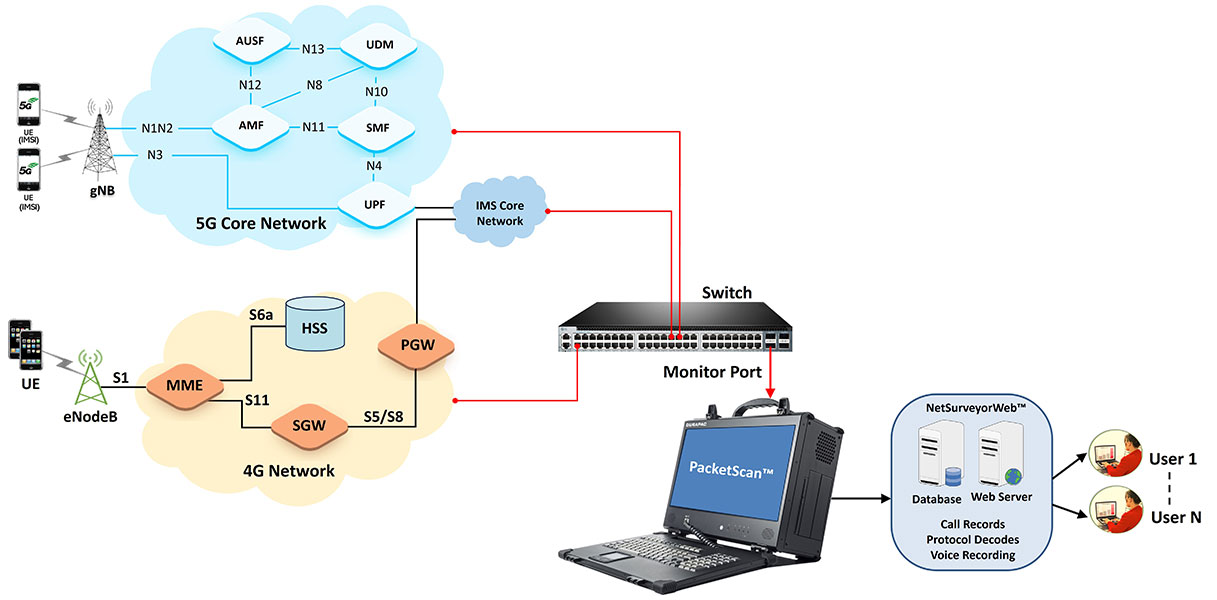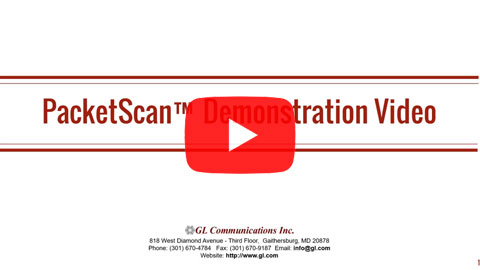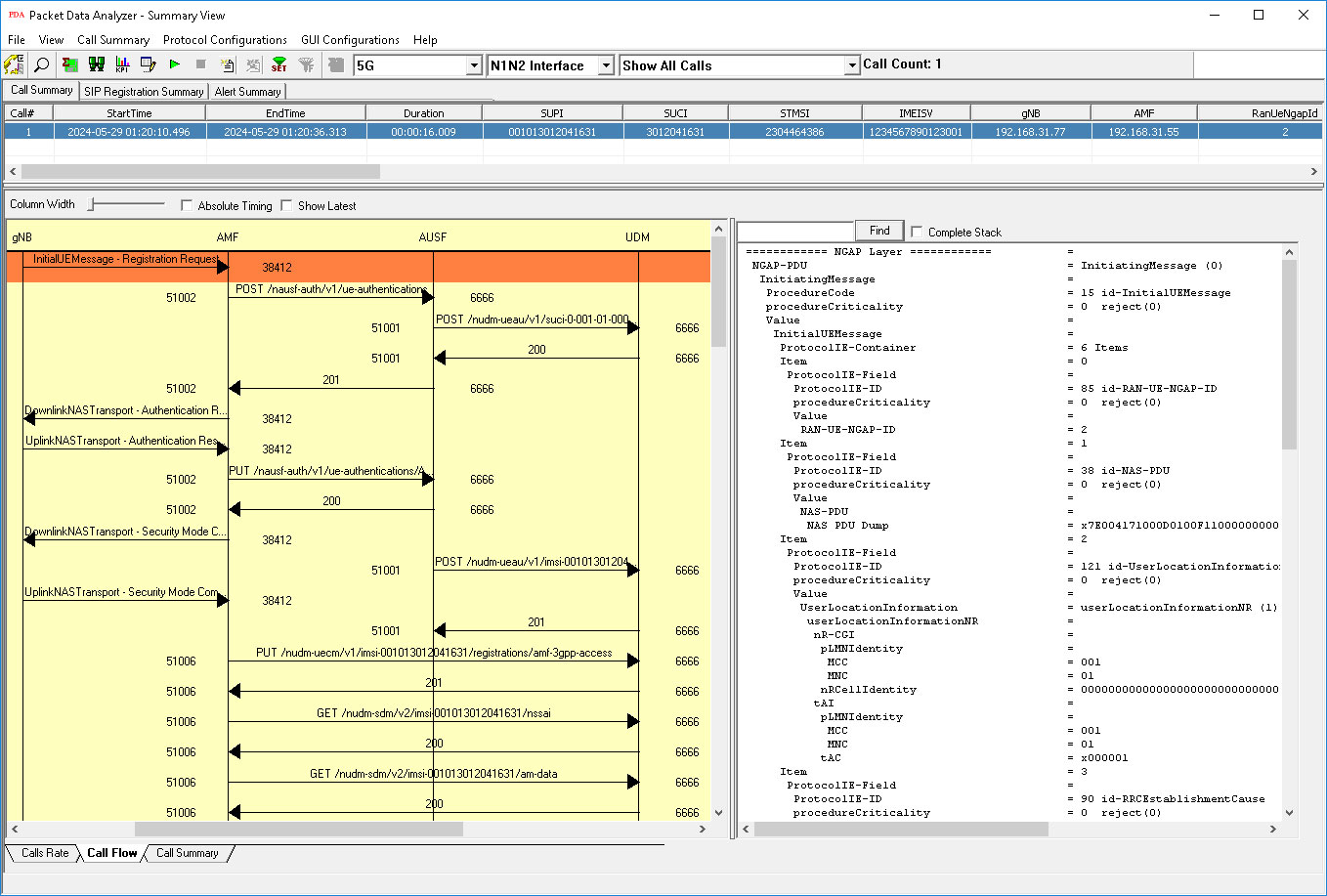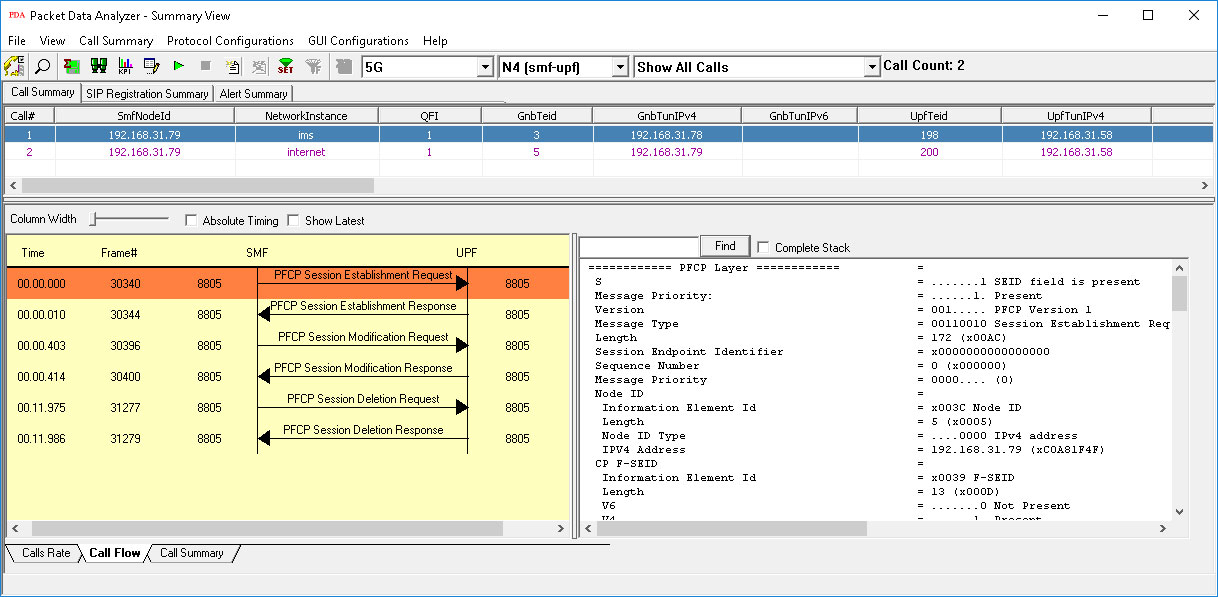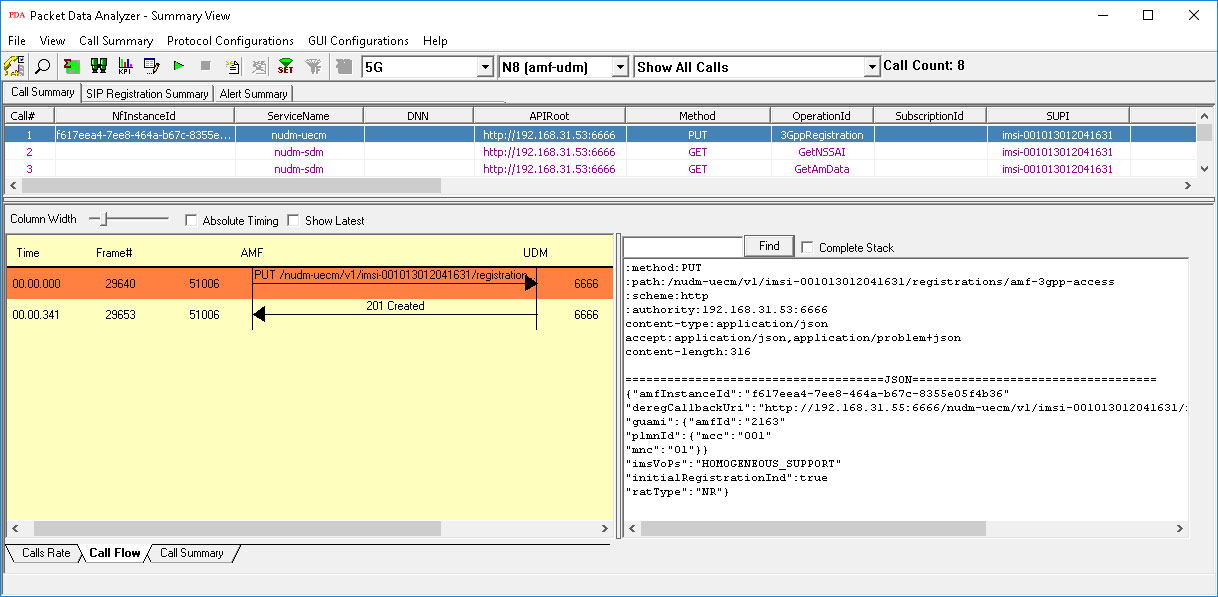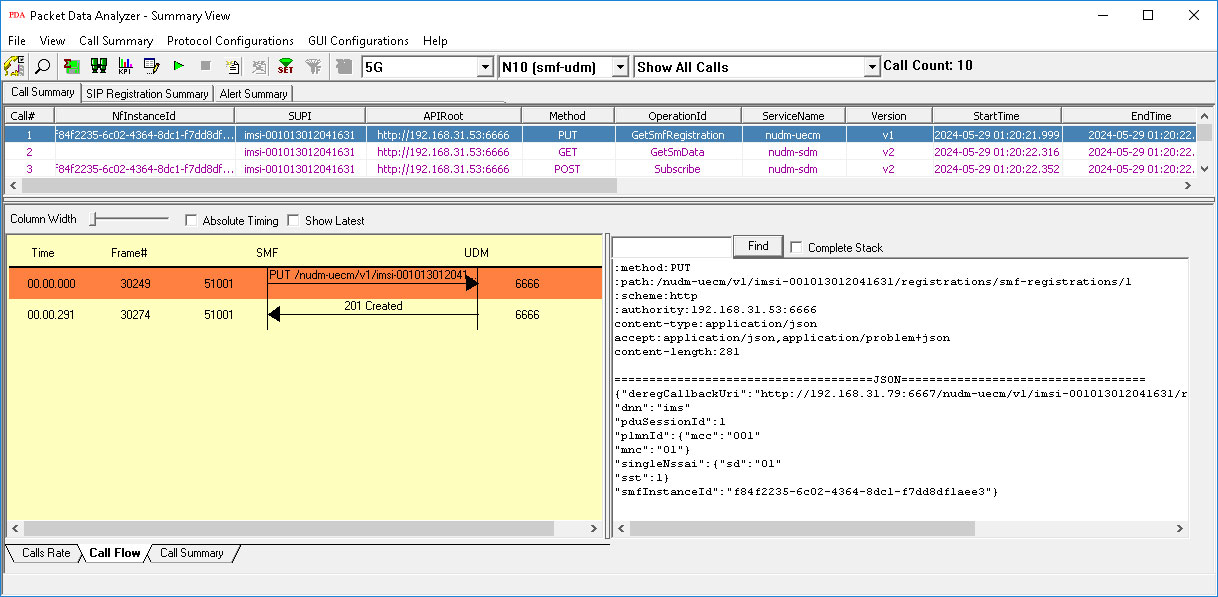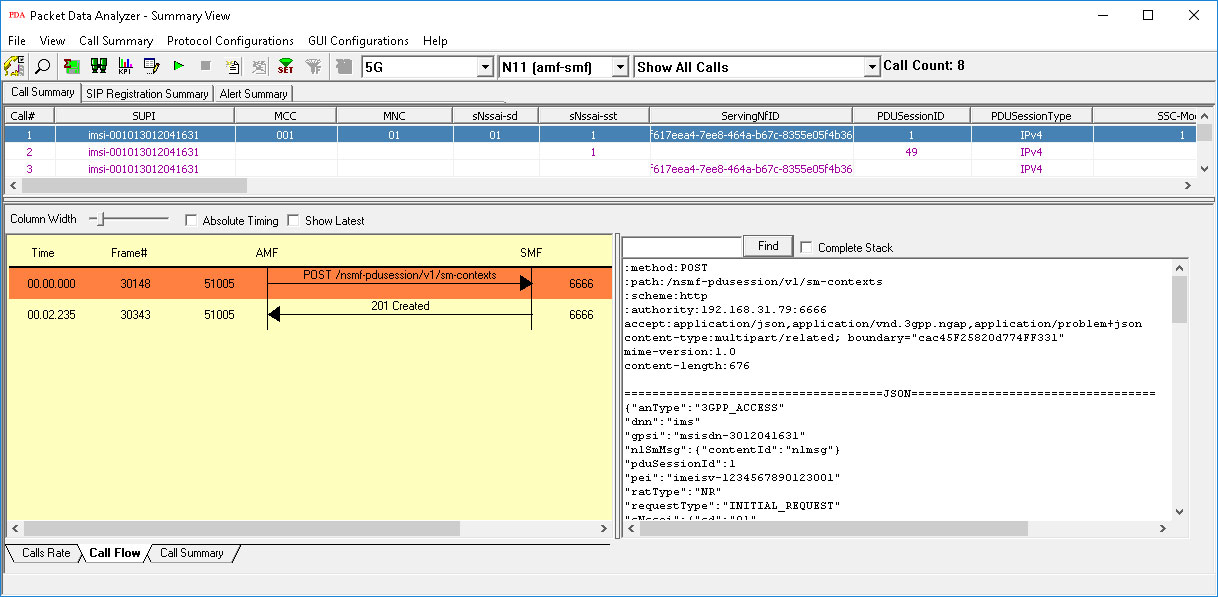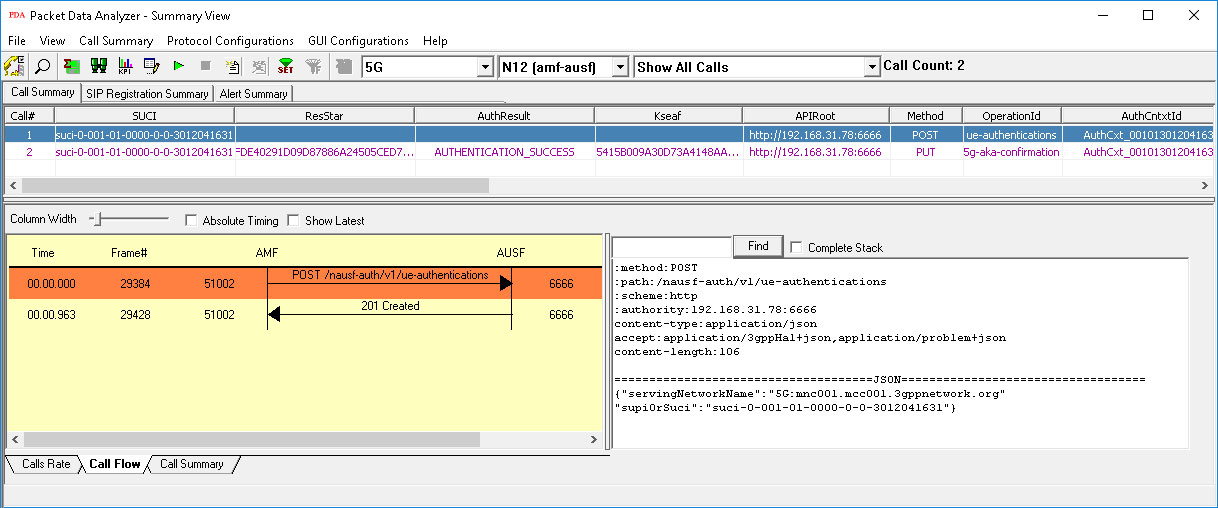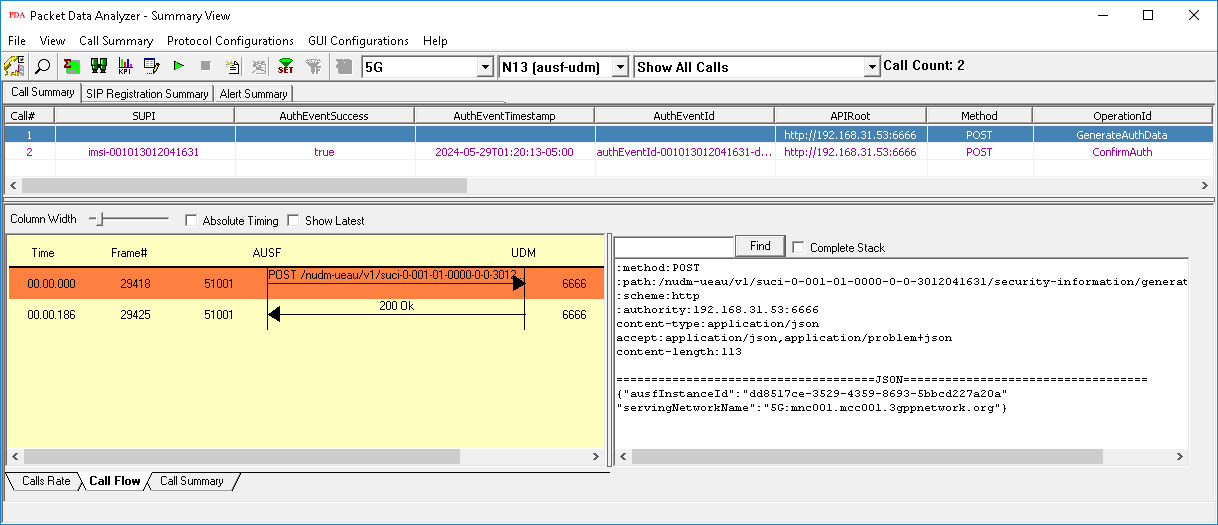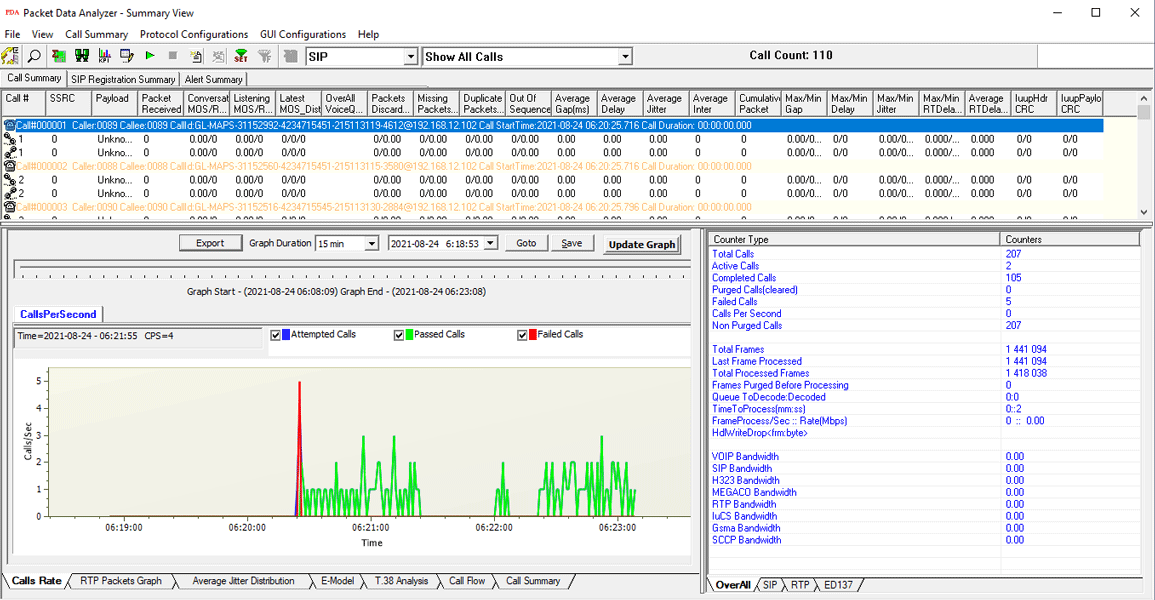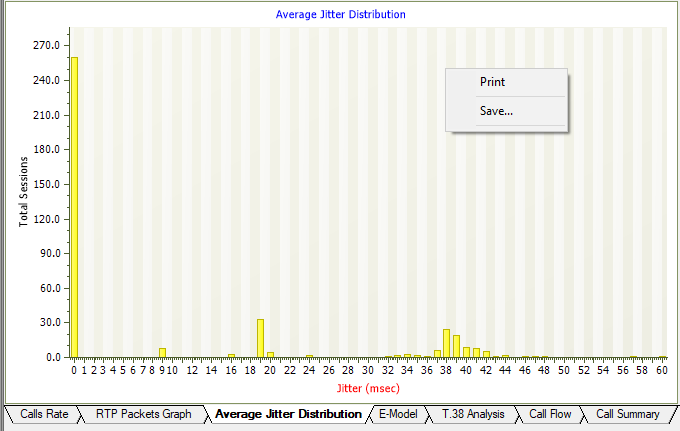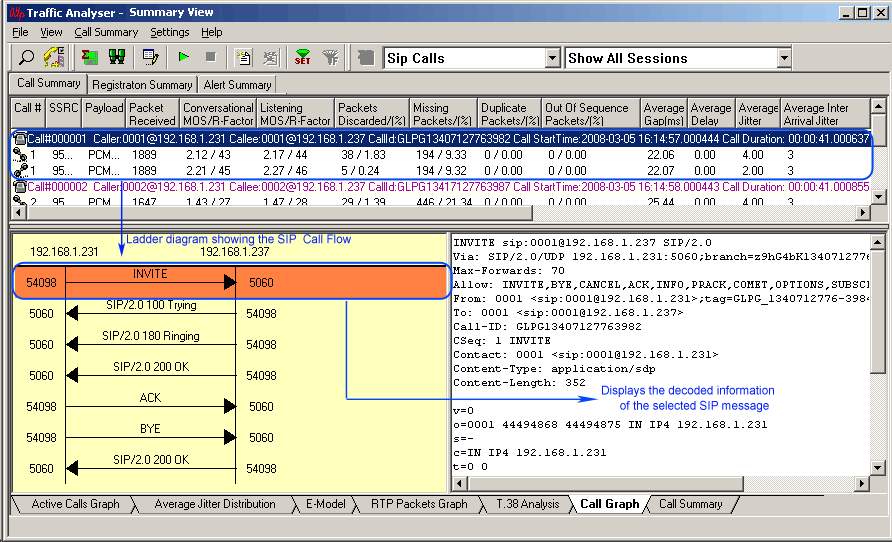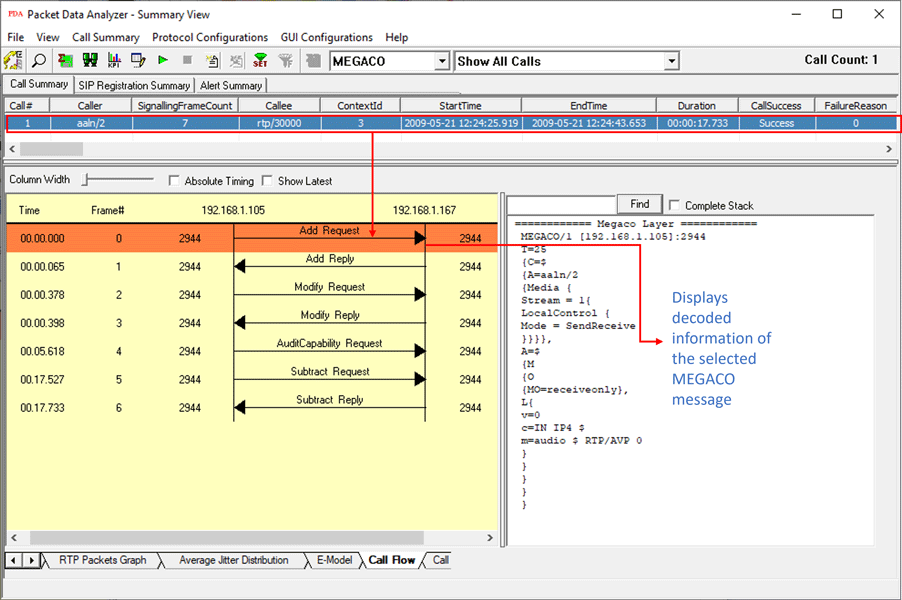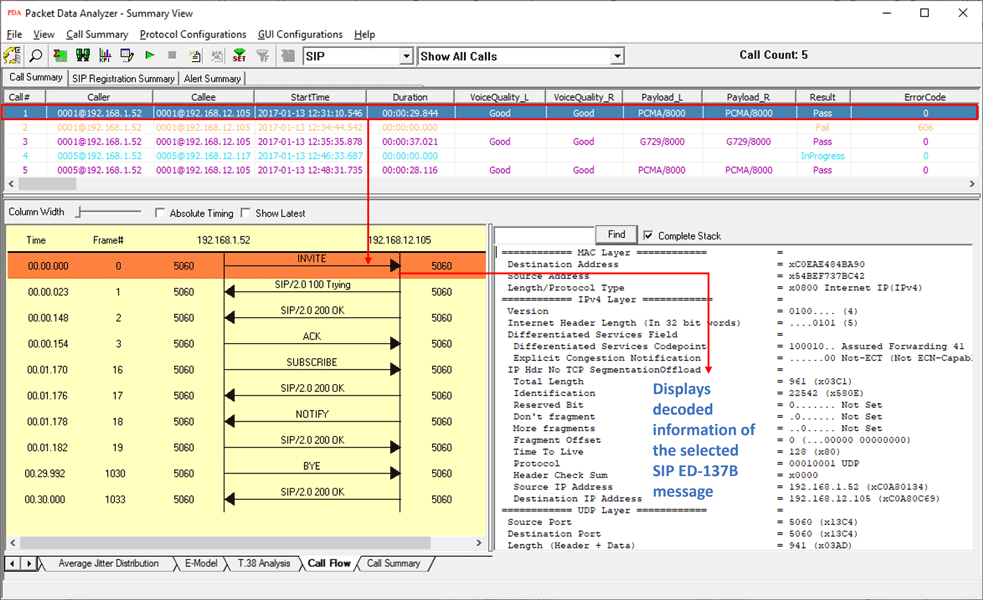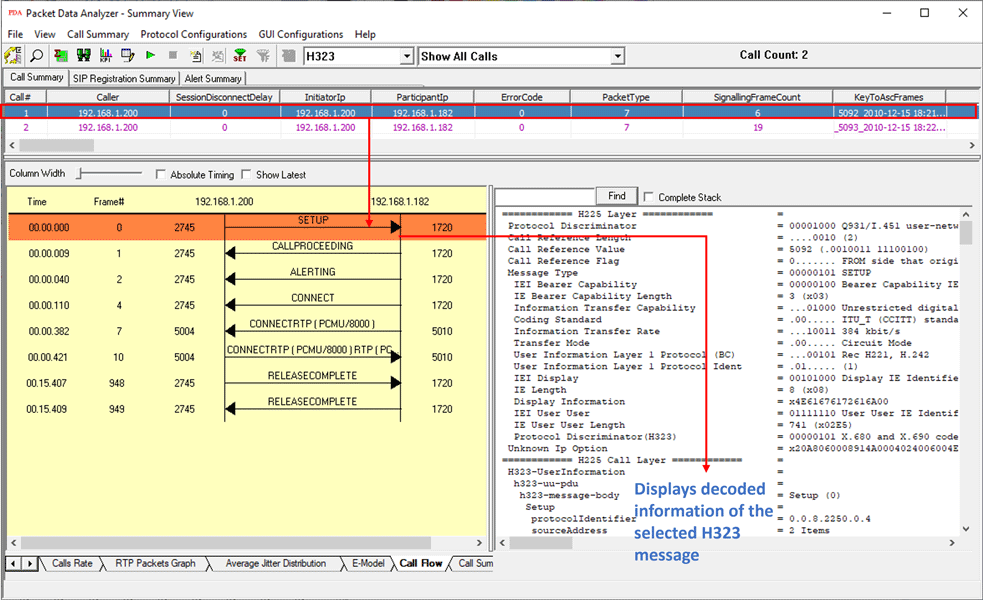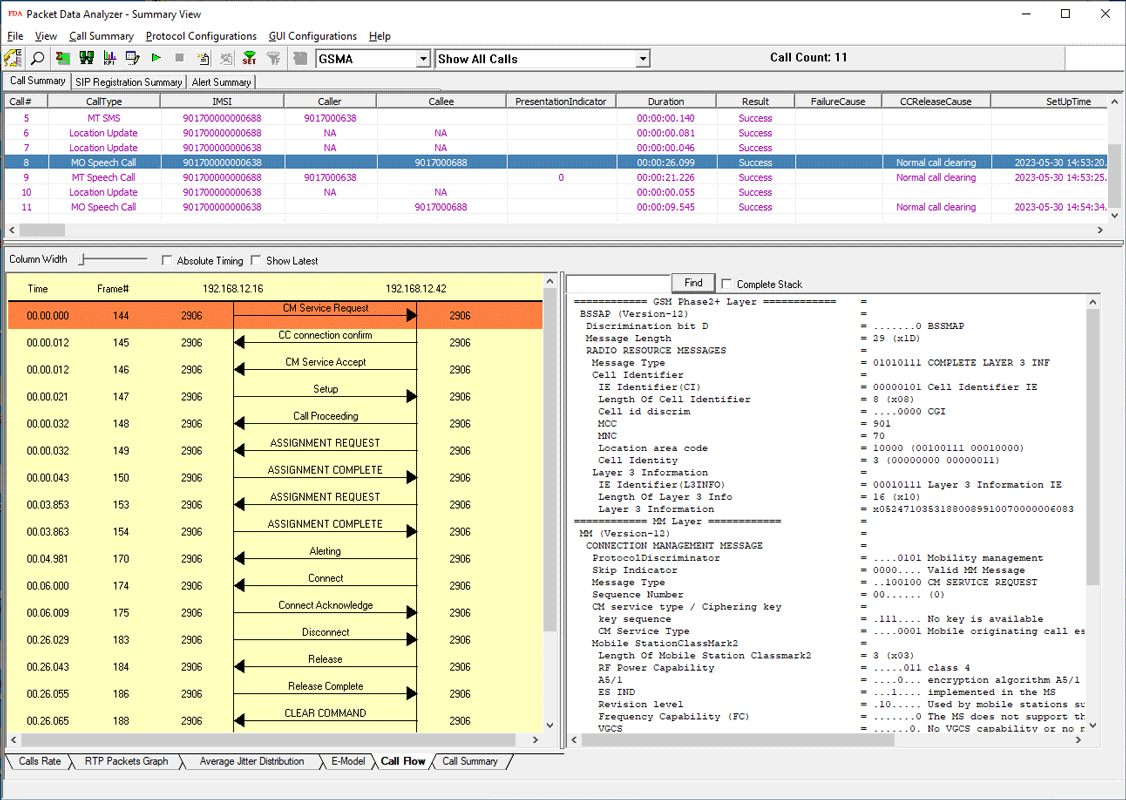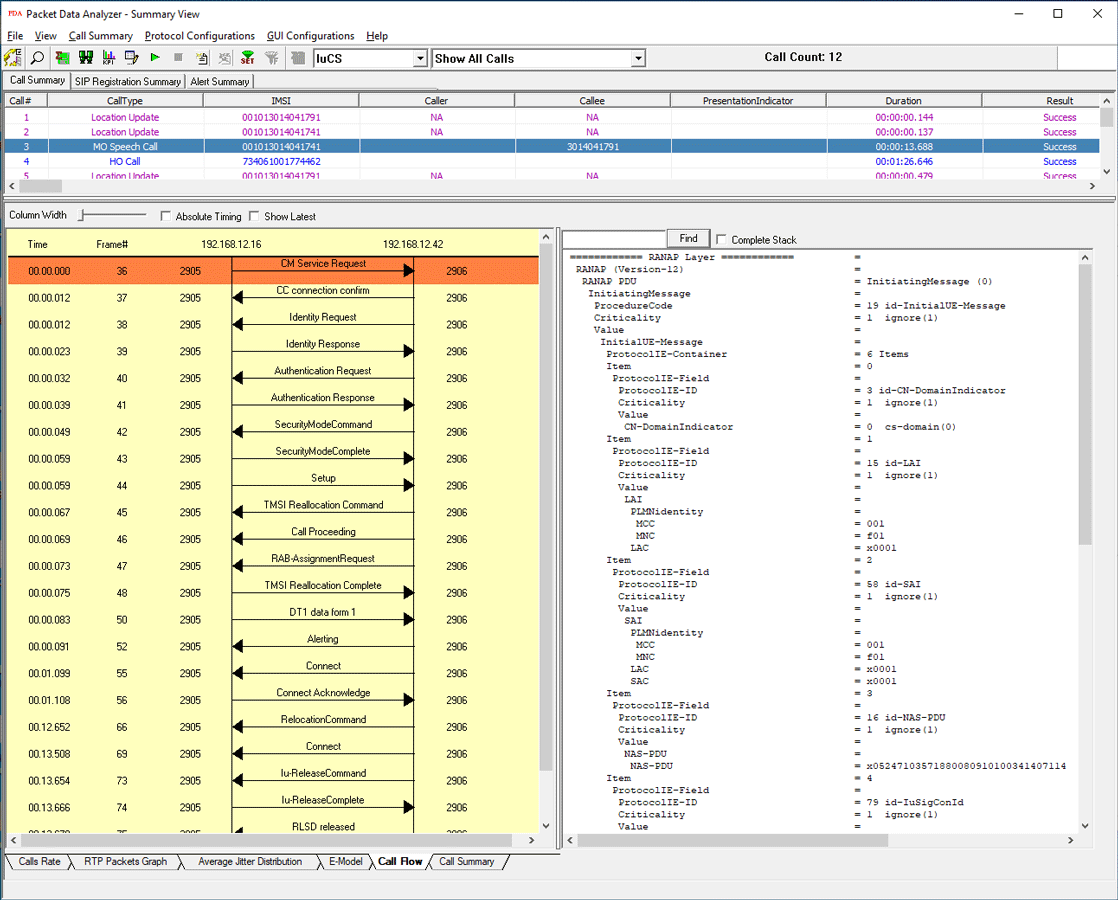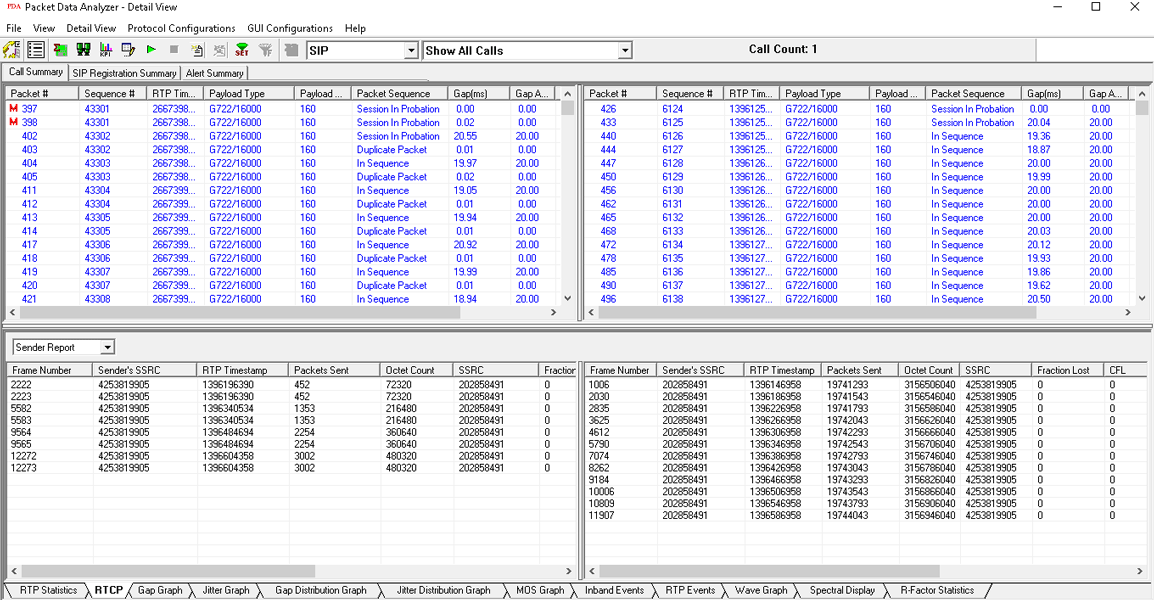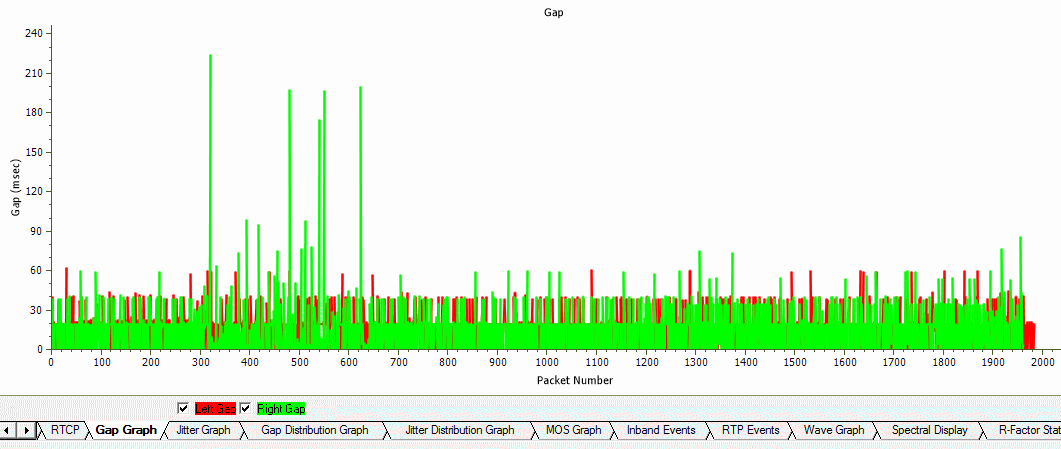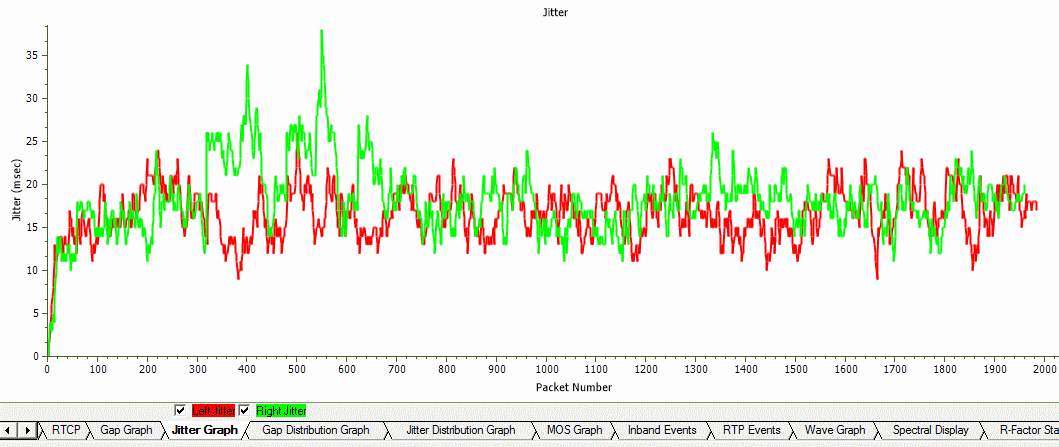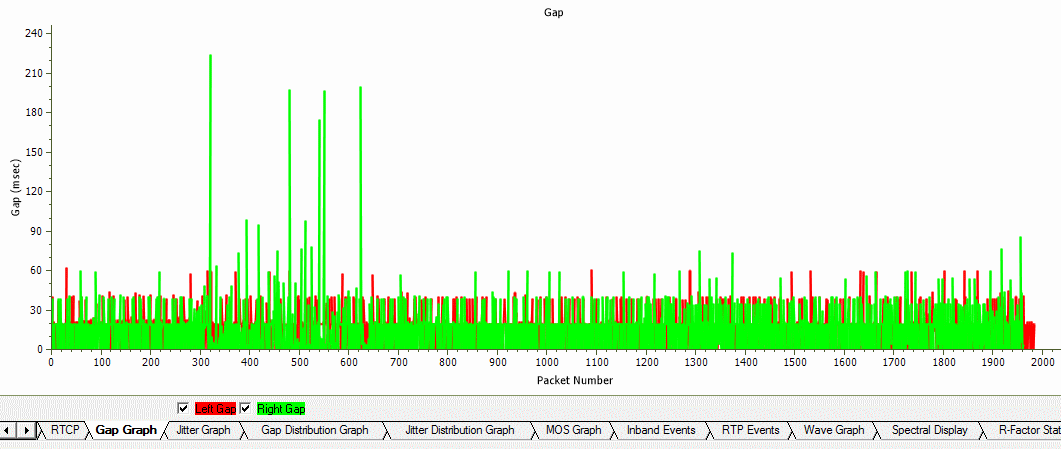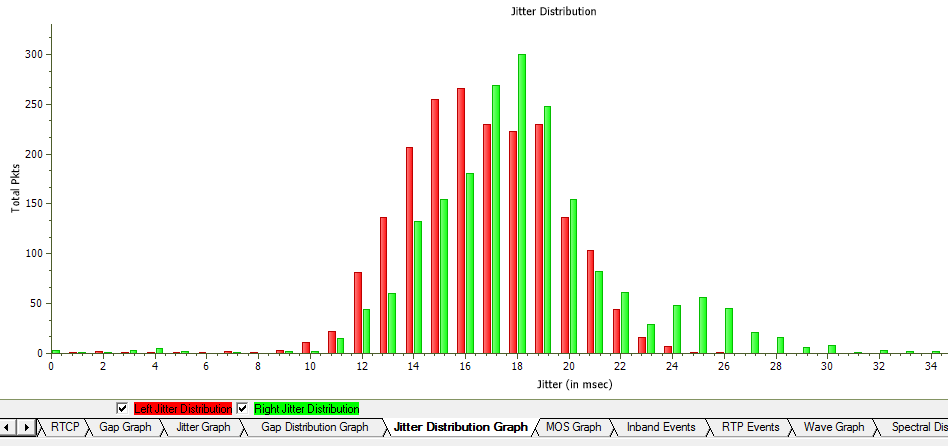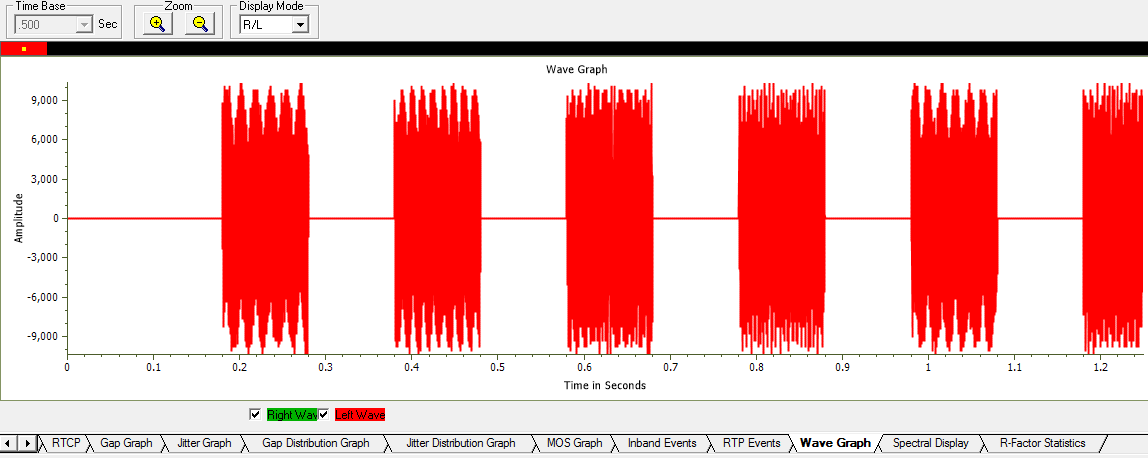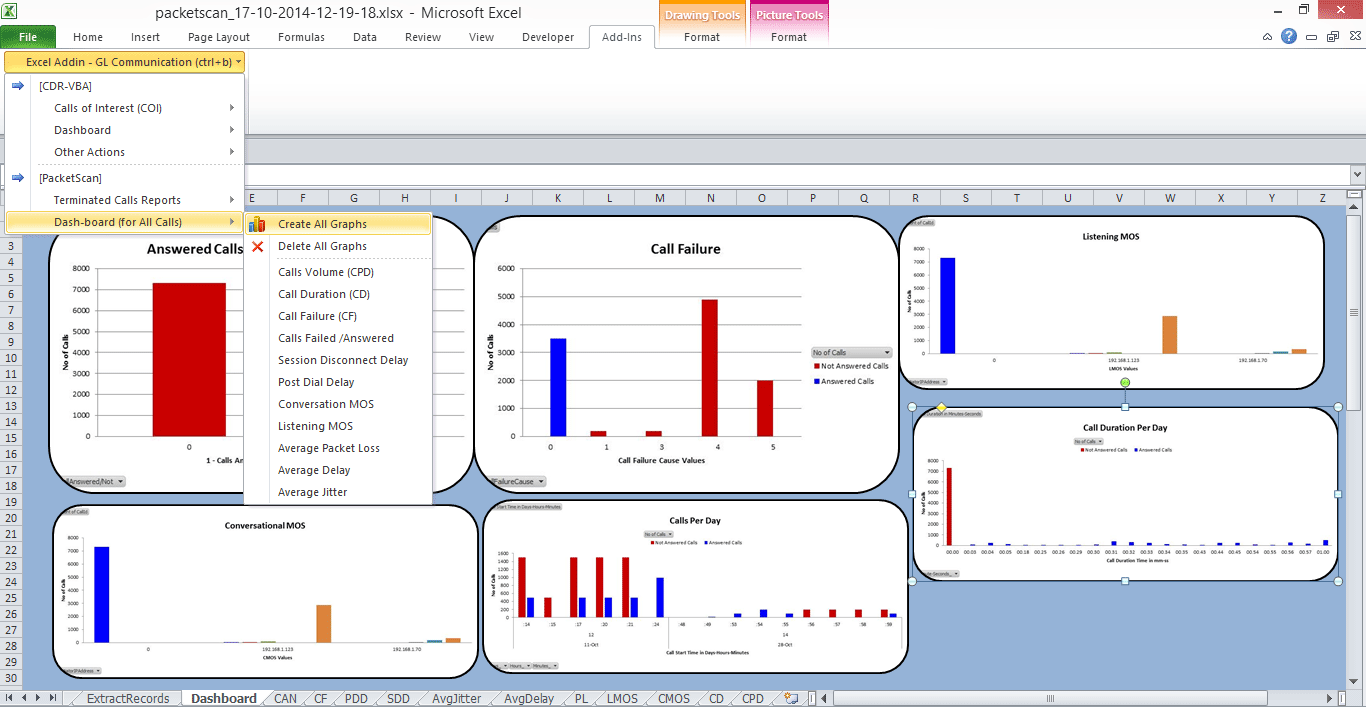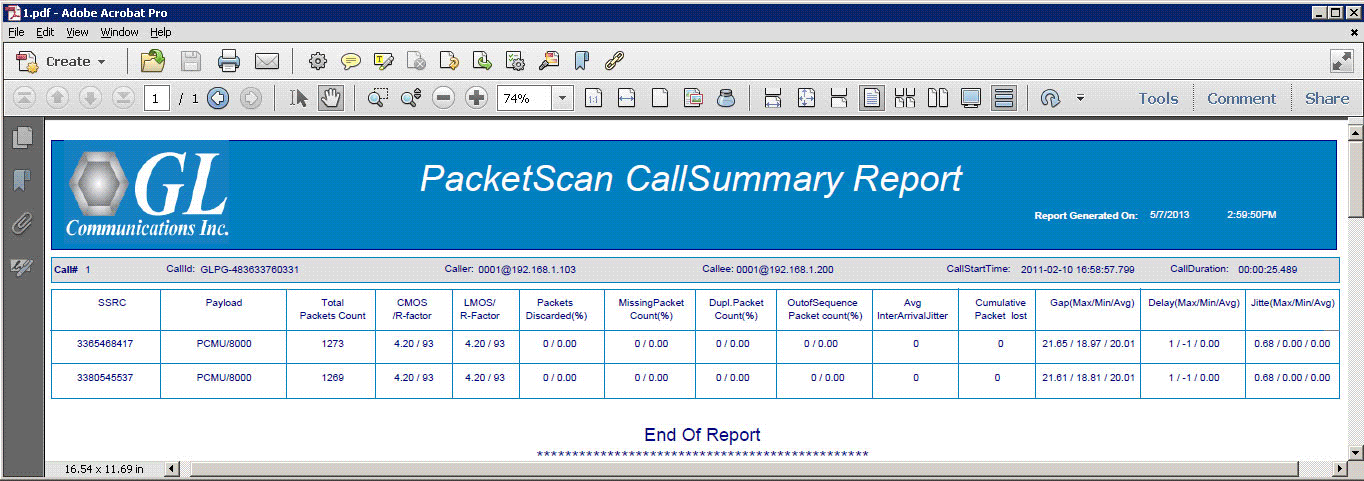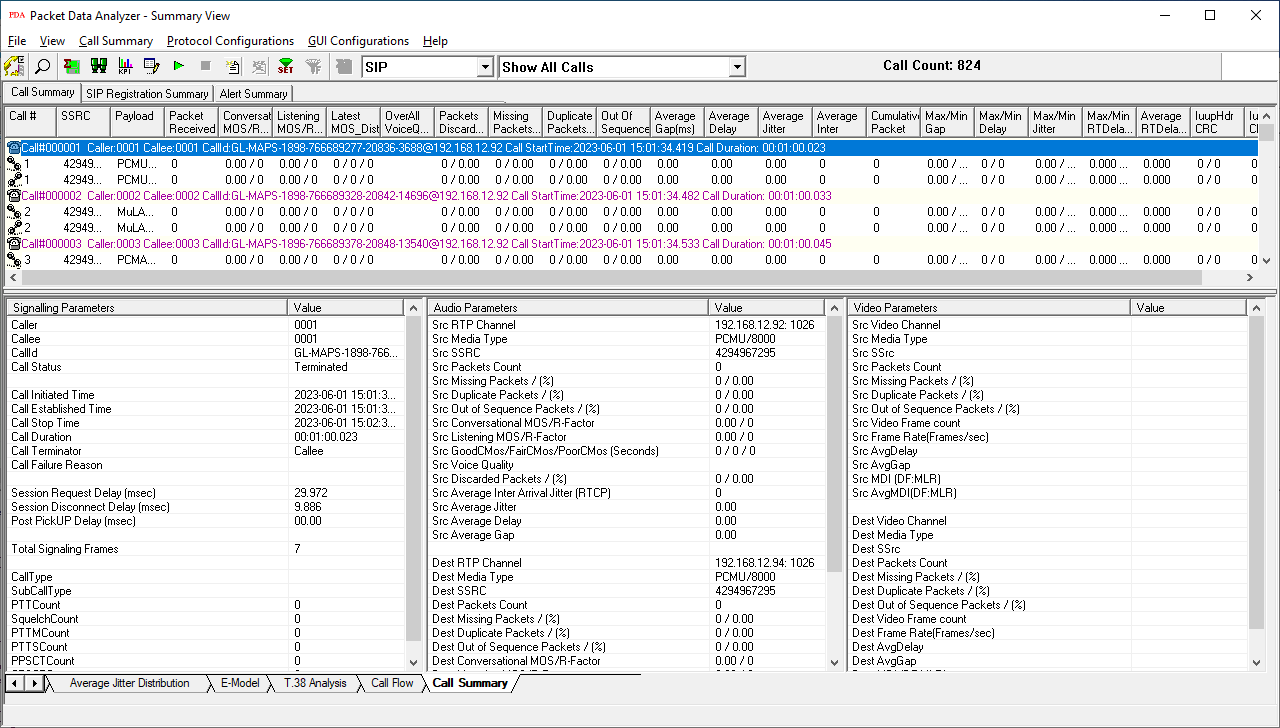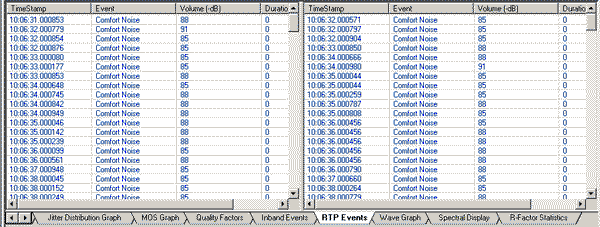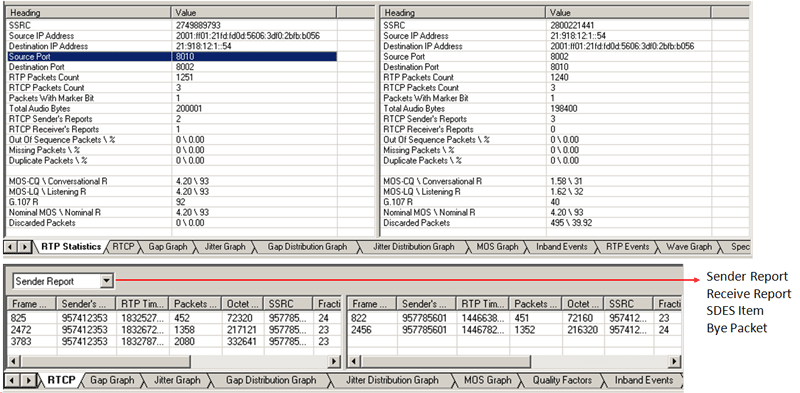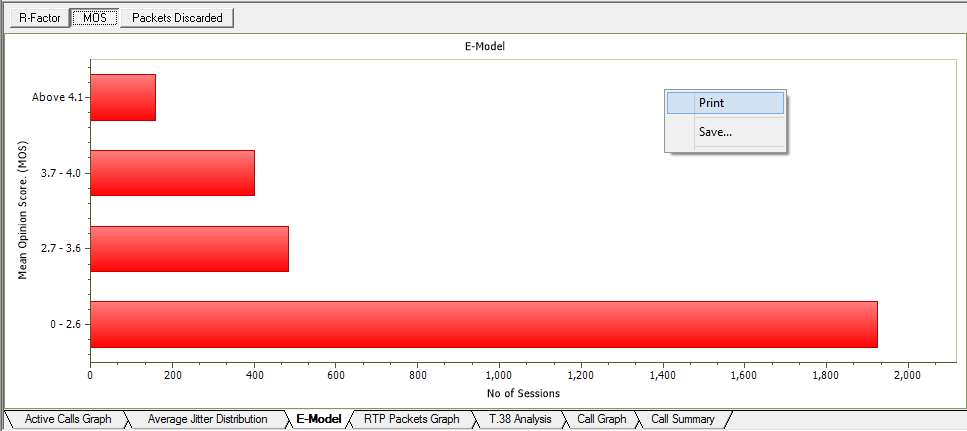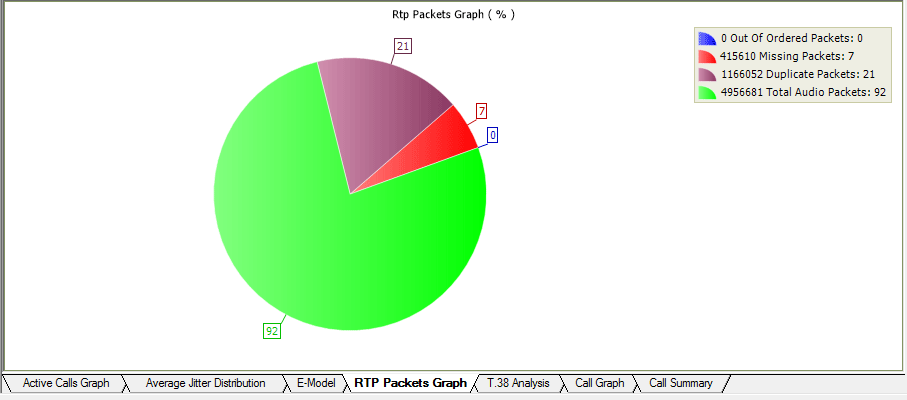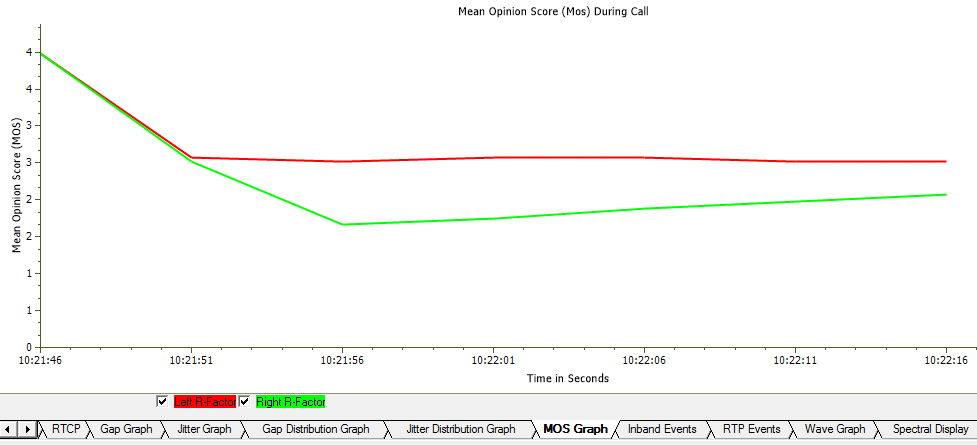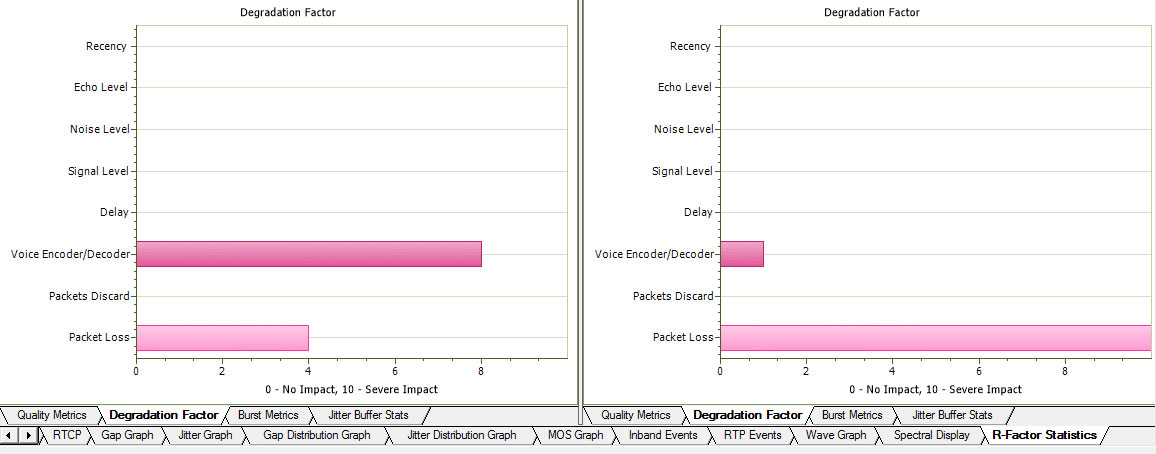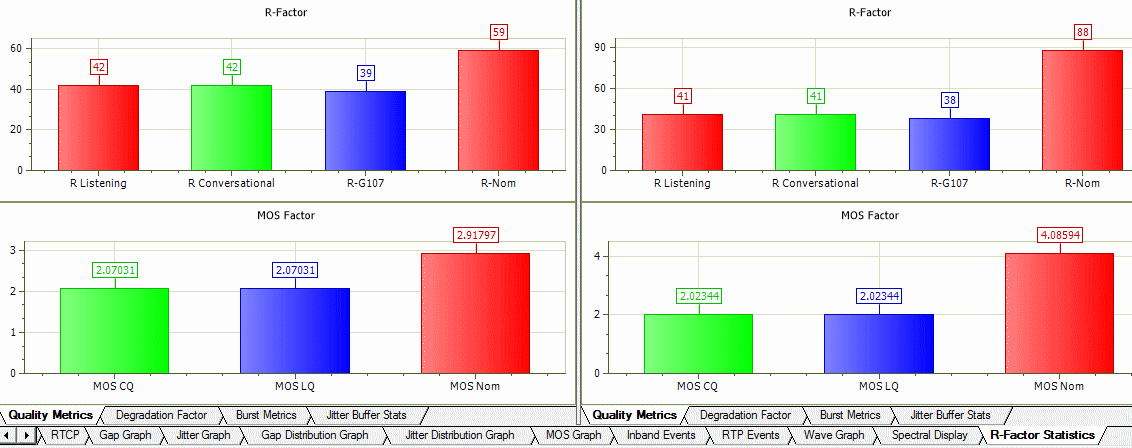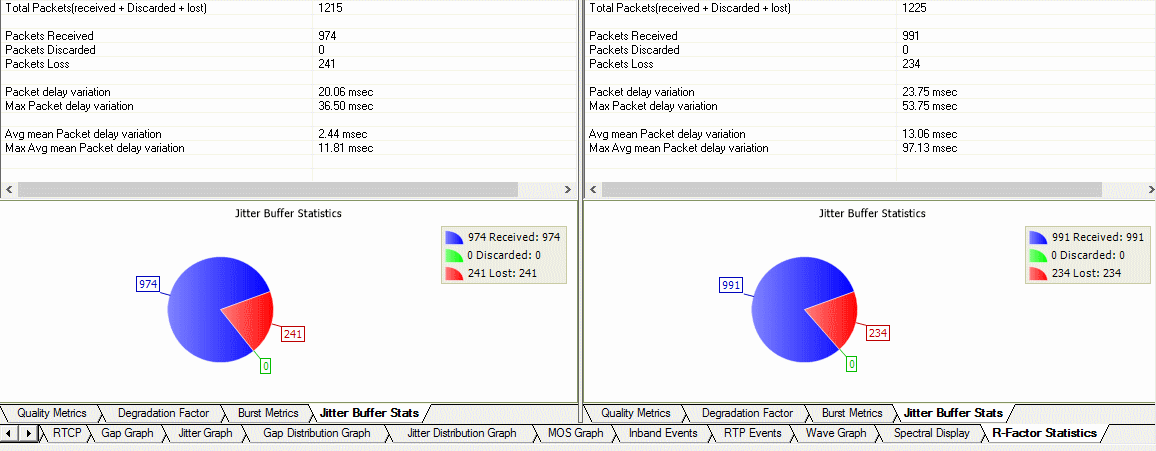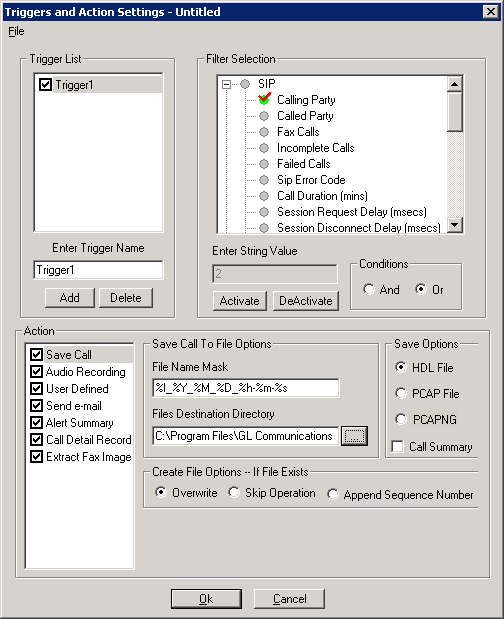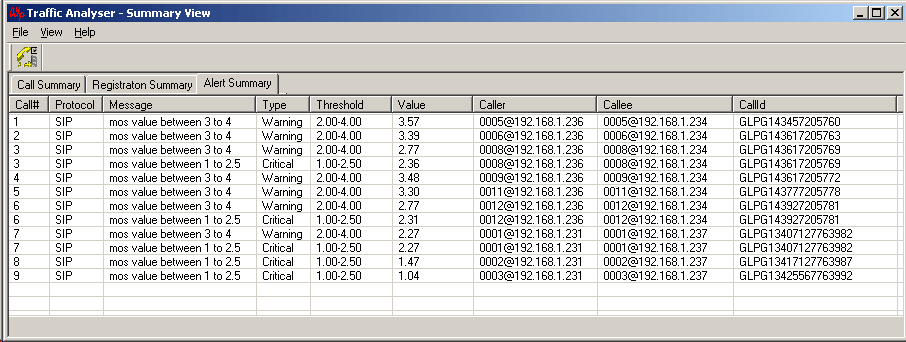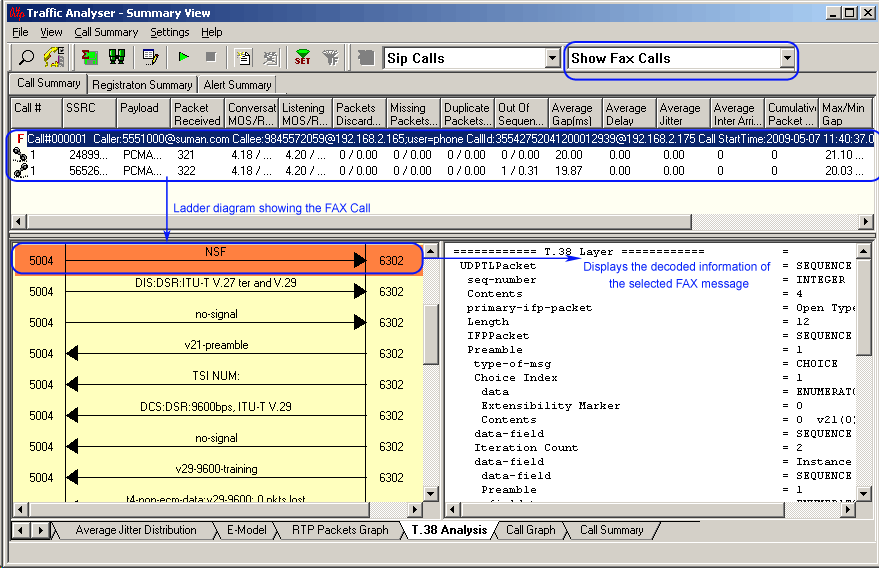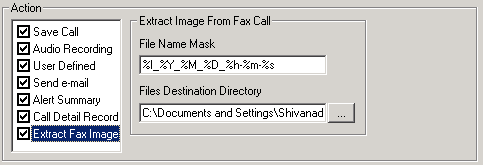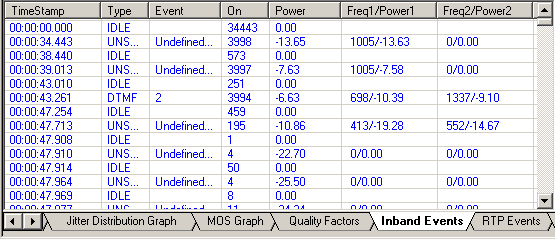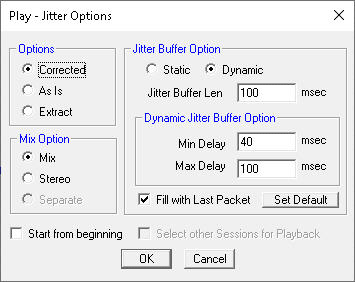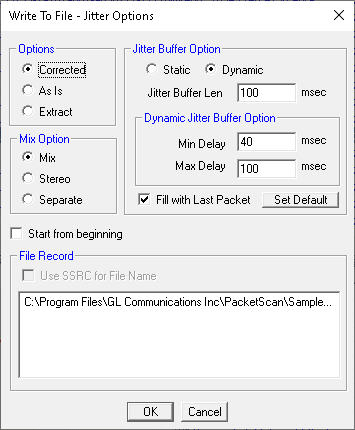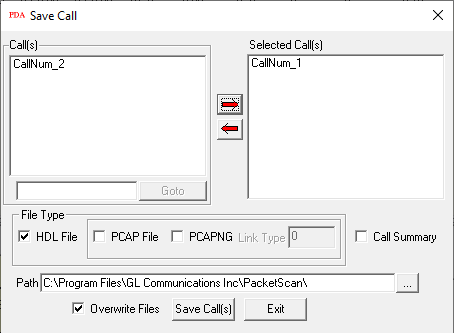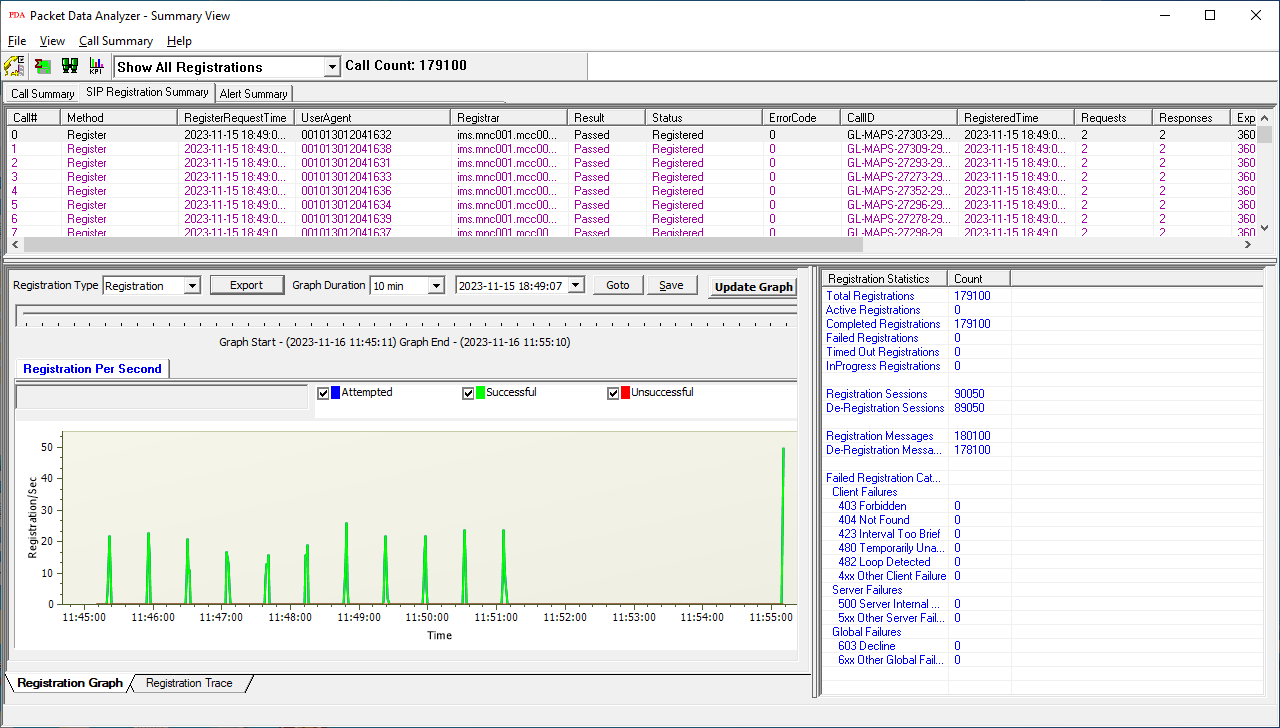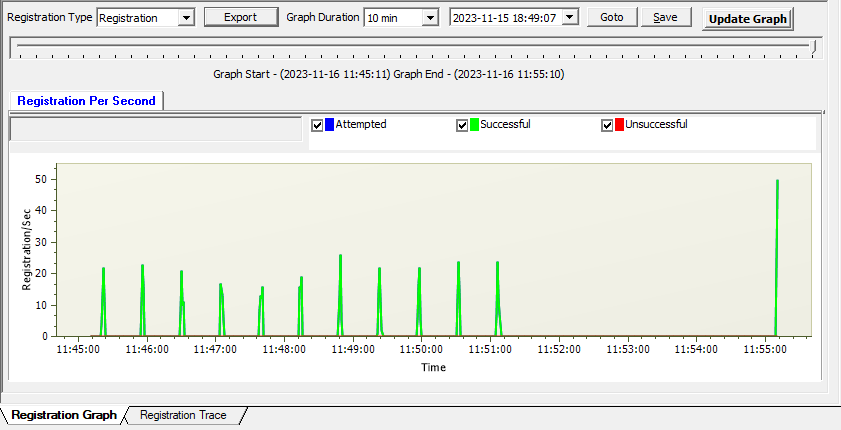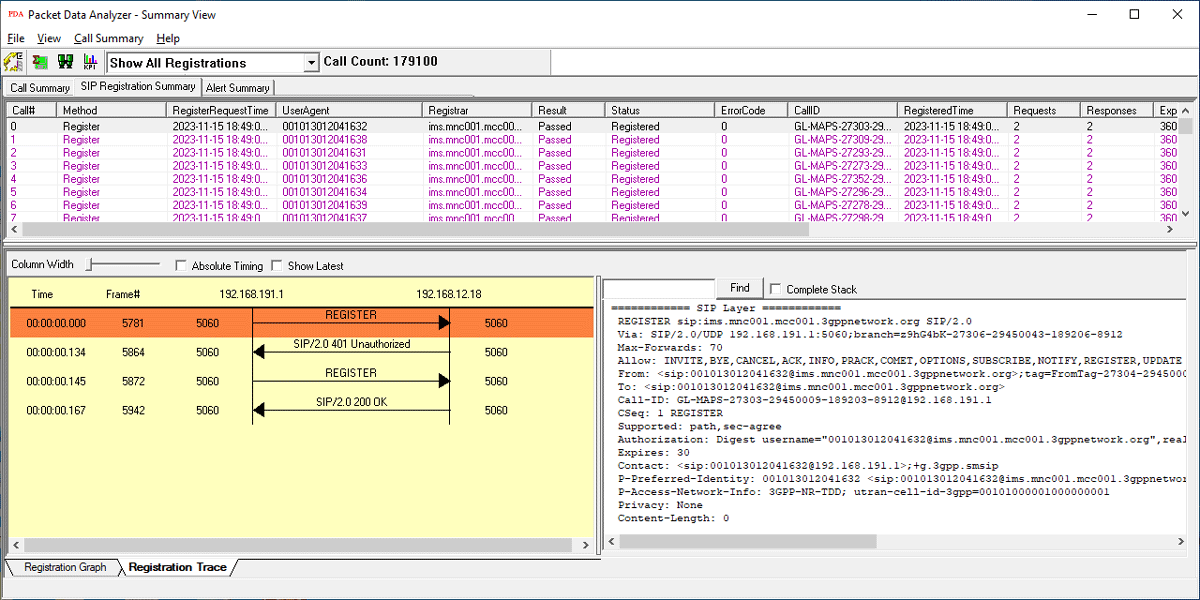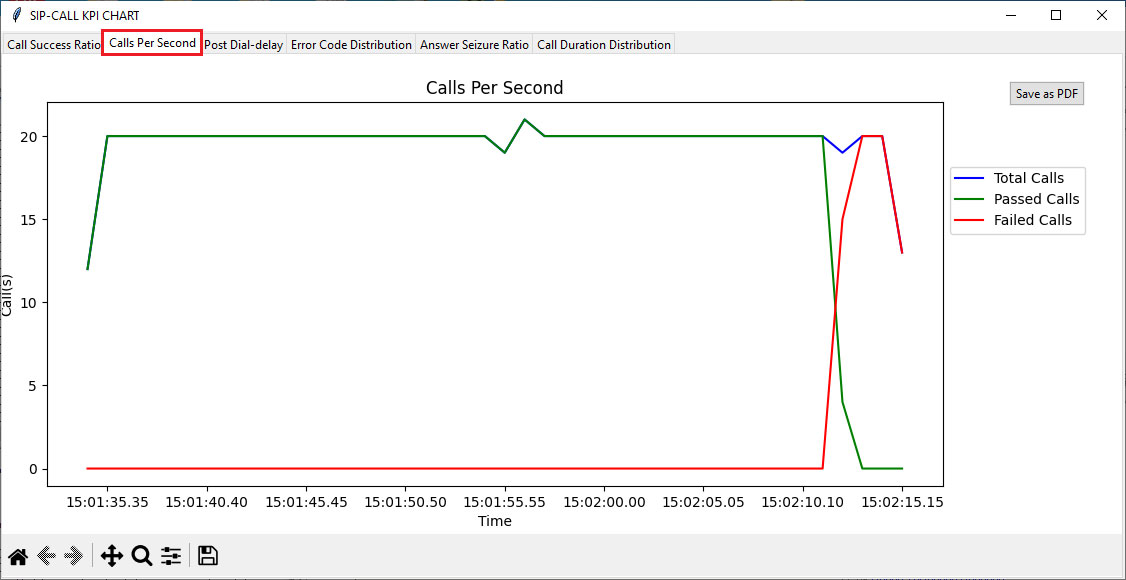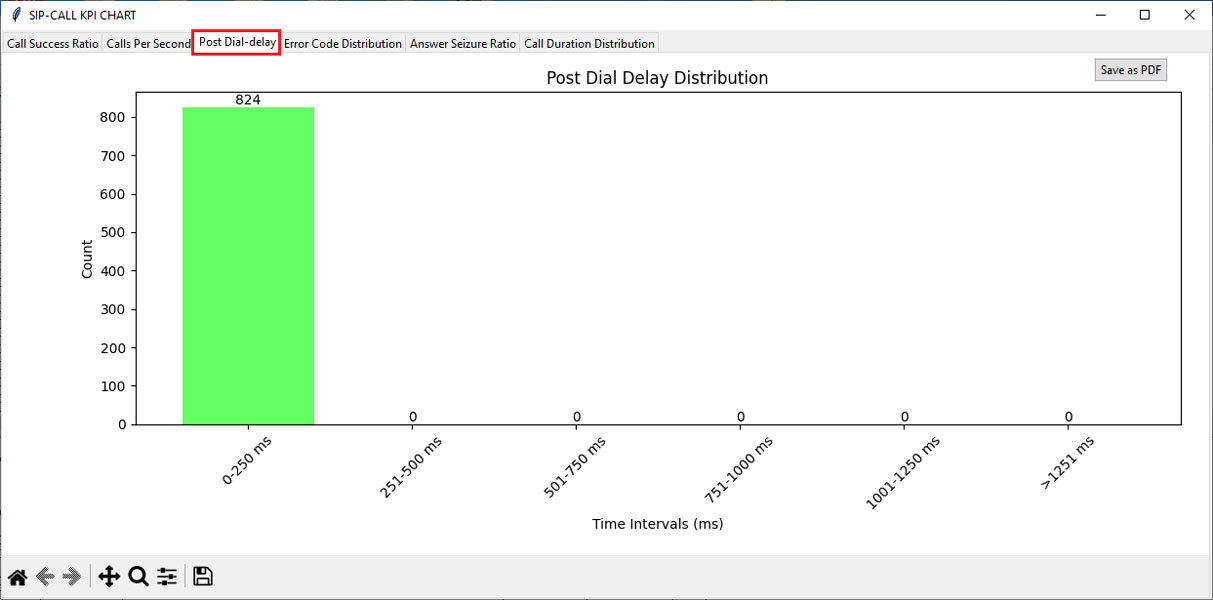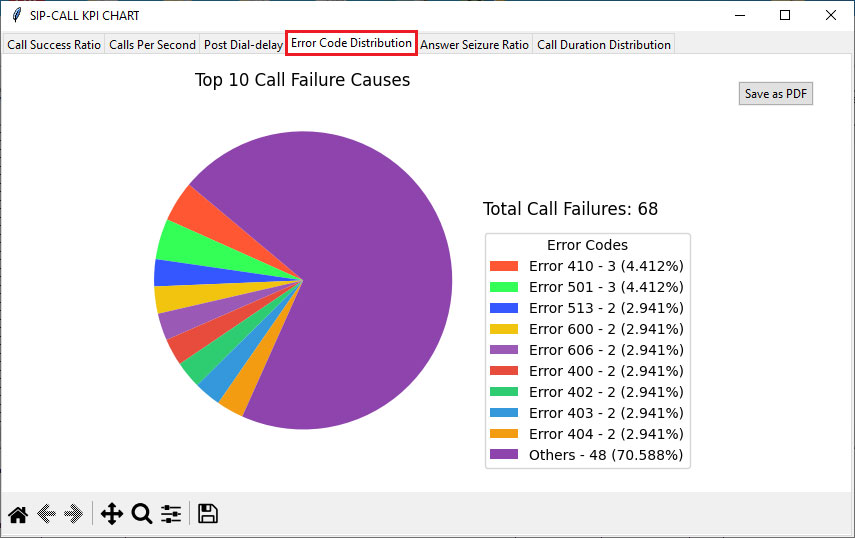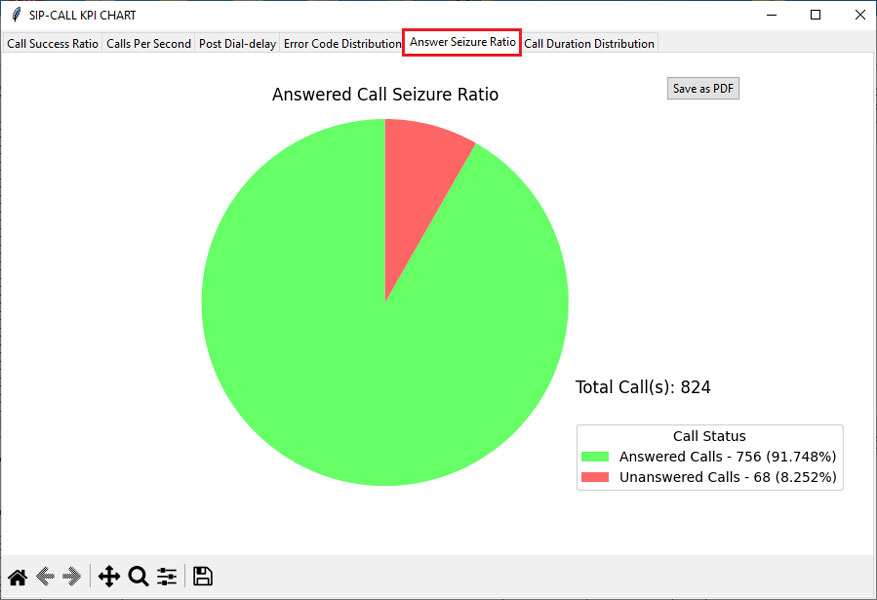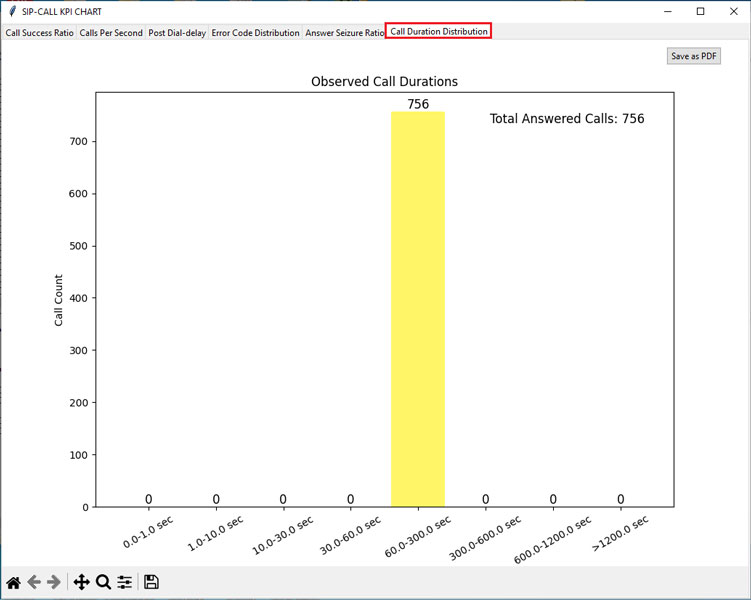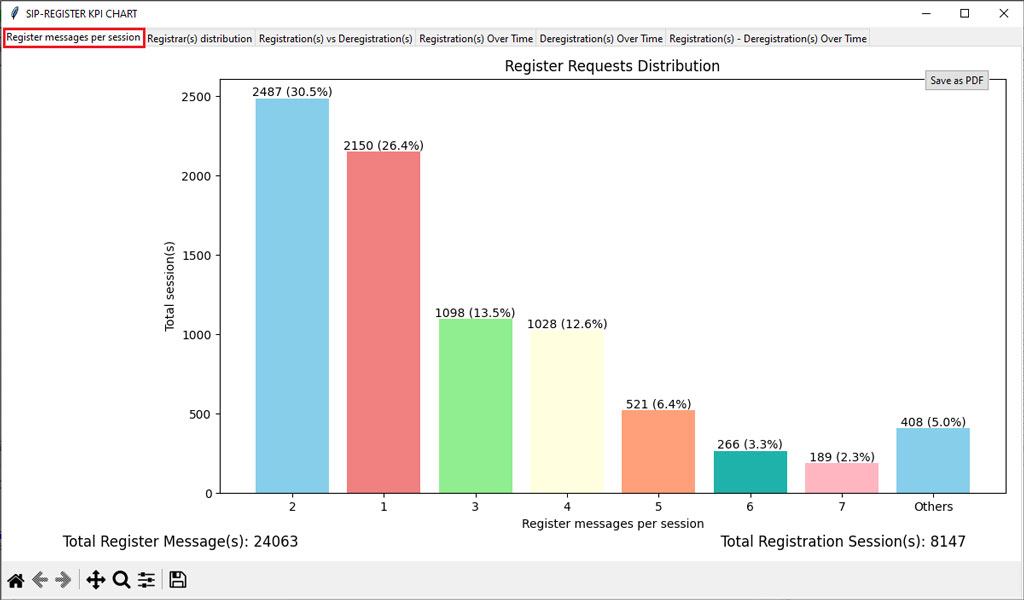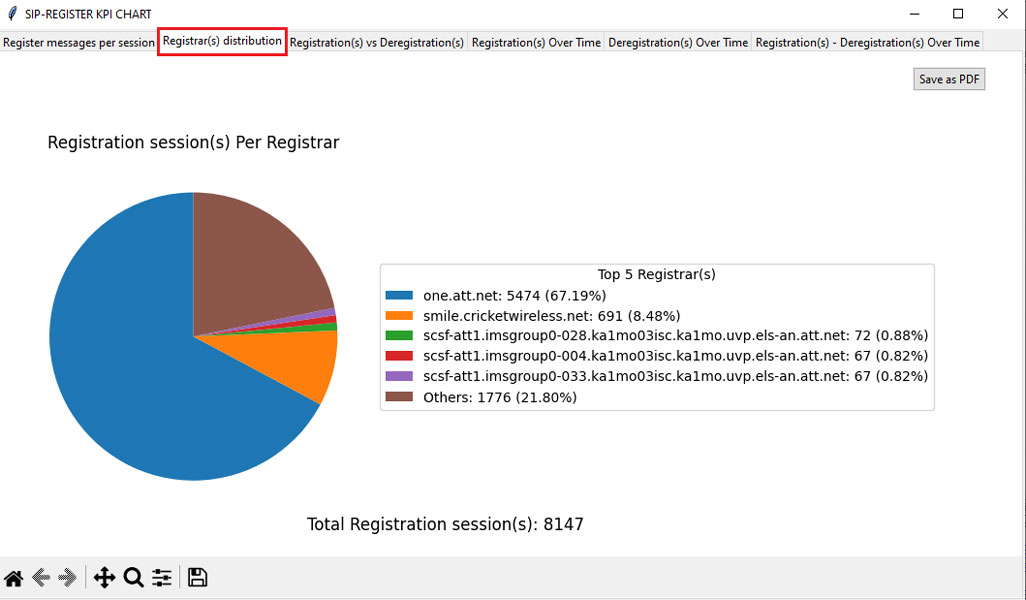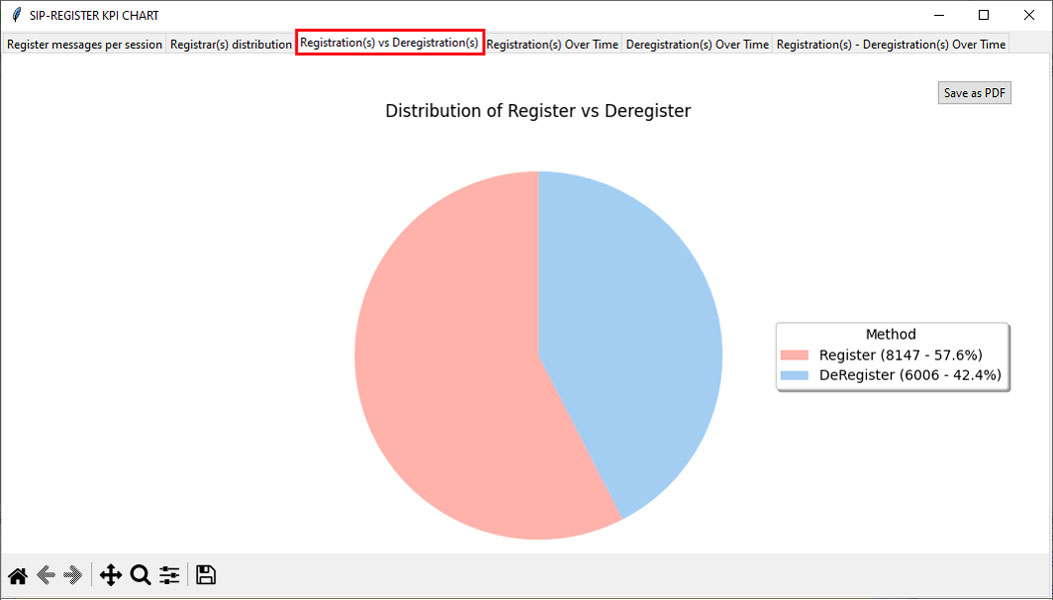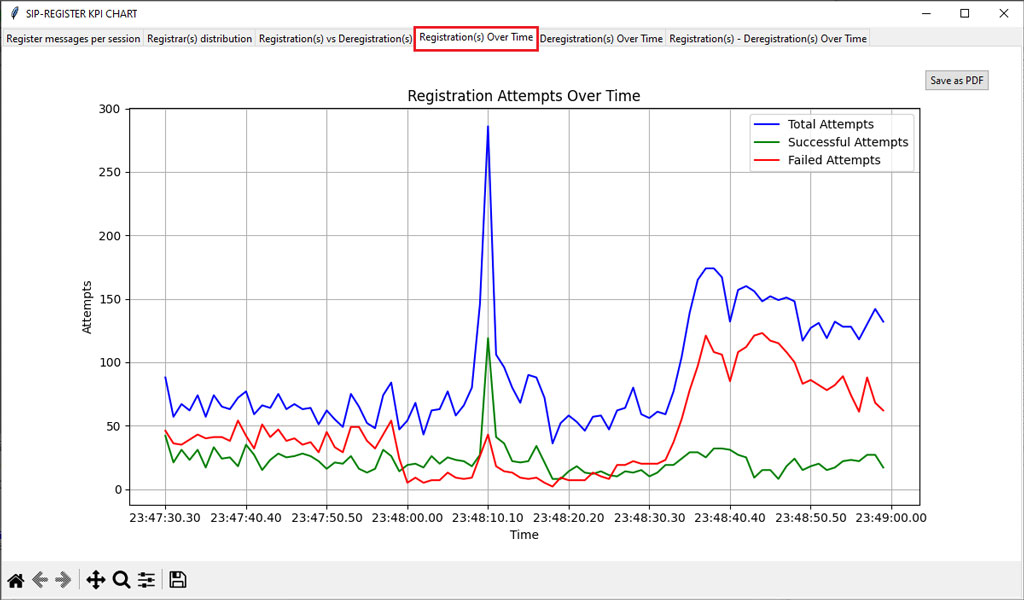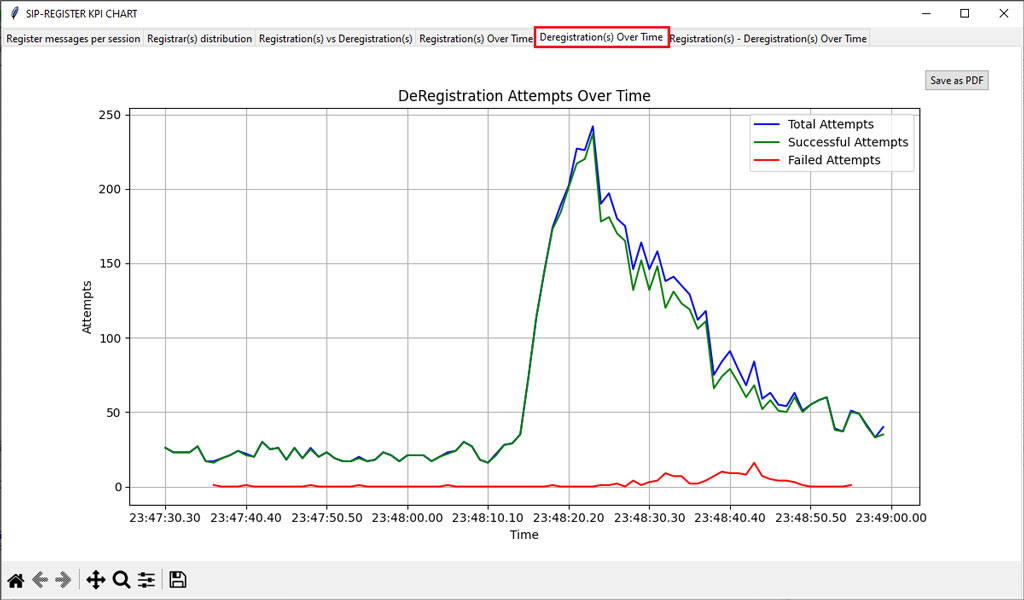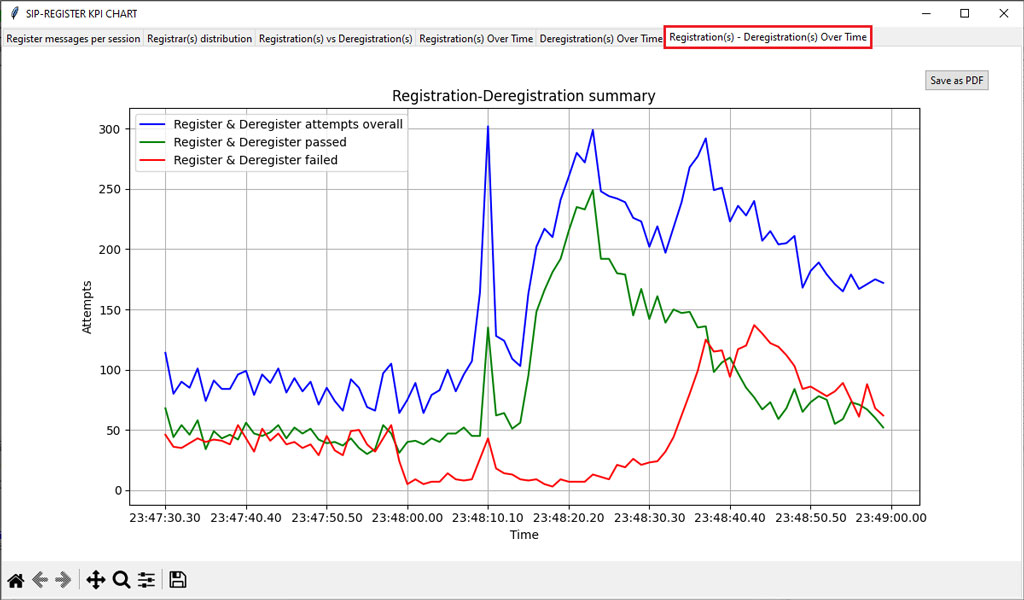PacketScan™ – Real-Time Network Traffic Monitoring and Analysis
PacketScan™ is a powerful, carrier-grade network monitoring and analysis solution designed for telecom service providers, equipment manufacturers, VoIP operators, and mission-critical communication environments. PacketScan™ offers scalable, continuous, and protocol-rich monitoring across next-generation and legacy networks.
Request a Demo / Quote BrochureOverview
With most carriers rolling out multi-services, including voice, video, fax, and data transported via packet networks, there is need for constant testing and monitoring of Quality of Service (QoS) and Network Performance of Next Generation Networks (NGN).
GL's PacketScan™ - an All-IP Network Monitoring software offers powerful features to capture and monitor live signaling and traffic over IP (IPv4 & IPv6). The application efficiently decodes, segregates, and troubleshoots network issues across VoIP and wireless protocols, supporting diverse traffic types over IP networks.
PacketScan™ product variants -
- PacketScan™ Real-Time Network Monitoring Software
- Monitoring and analysis on standard NICs supporting speeds up to 1 Gbps
- PacketScan™ HD (High-Density) Network Monitoring Appliance w/ 4×1 GigE, 2×10 GigE, and 2×40/100 GigE interfaces
- High-Speed Capture & Record Module – Lossless high-rate traffic recording
- Enhanced PacketScan™ Module – Integrated high-capacity protocol and call/session analysis
Packet Data Analysis (PDA) is a versatile component integrated across GL’s packet analyzers. It decodes signaling and media protocols, identifies and correlates call sessions, and provides detailed statistics and reports. PDA supports a wide range of protocols such as 5G/4G (NAS, Diameter, GTP, PFCP), VoIP/IMS (SIP, MSRP, MEGACO, MGCP, H.323), 3G/2G (RANAP, GSM A, CAMEL, MAP), and SIGTRAN (ISUP, BICC). It can capture and process IP packets from various transmission lines—IP, T1, E1, T3, E3, OC-3/STM-1, and OC-12/STM-4.
Key Features
PacketScan™ provides unmatched network intelligence by seamlessly correlating signaling and media flows across multiple nodes and interfaces. This delivers a comprehensive, subscriber-centric view of each session—from initiation through termination.
- Unified Multi-Technology Monitoring
Monitor signaling across a broad range of technologies, including 5G (N1/N2, N3, N4, N11–N13), 4G (S1AP, eGTP, Diameter), IMS (SIP), 3G (IuCS, IuPS), 2G (GSM A, Gb), and SIGTRAN (ISUP, MAP, BICC, CAMEL). Generate intuitive call-flow diagrams that visualize the complete subscriber journey across these technologies - Encrypted Control Plane Visibility
Decrypt 5G and 4G NAS signaling on monitored interfaces to eliminate blind spots in encrypted control planes - Automated CDRs and Centralized KPI Analytics
Automatically generate structured Call Detail Records (CDRs) for each session. These can be fed into NetSurveyorWeb™ to create enterprise-wide dashboards, perform historical trend analysis, enable root-cause filtering, and deliver cross-network KPI reporting - PCAP Export for Forensic Analysis
Extract complete signaling sessions into standard PCAP files for offline troubleshooting, vendor escalation, or compliance archiving. With PacketScan™, operators gain true, end-to-end visibility into subscriber sessions—enabling proactive monitoring, faster troubleshooting, and reliable performance assurance across all network generations
- Continuous real-time capture and decoding without interruption
- Handles very large trace files, up to terabyte sizes, ensuring scalability for long-term monitoring
- Designed for 24/7 operations in live carrier networks and enterprise environments
- Simultaneous monitoring of up to 30,000 calls, scalable beyond 50,000 calls. (PacketScan™ HD)
- In-depth VoIP call monitoring including call flow, call quality, and failure reasons
- Support for a wide range of audio codecs: AMR, AMR-WB, EVRC, EVRCB, EVRCC, EVS, OPUS, and more. Option to record and playback the voice
- Real-time computation of voice quality metrics such as:MOS (Mean Opinion Score), R-Factor, Jitter, Delay, and Packet Loss
- MOS is periodically calculated during the call to highlight Good, Average, or Poor quality calls
- Extract fax images from T.38 sessions
- Automatically detect and act on events of interest:
Send email alerts, Save call trace or call detail records (CDR) in CSV, Record calls selectively - Apply conditions such as whitelisted numbers, failed calls, degraded MOS, or specific QoS issues to capture only relevant traffic
- Graphical statistics on live traffic including:
Call volumes and KPIs,Call flows and success/failure rates, Voice quality graphs (jitter, delay, MOS, R-Factor) - Intuitive dashboards for real-time monitoring and post-capture analytics
PacketScan™ is also available as a web-based monitoring solution.
- Supports running multiple instances simultaneously across different network interfaces or locations
- Each instance can be remotely invoked, managed, and monitored using a lightweight web client
- Provides operators with centralized access to captures, analysis, and statistics without requiring physical access to the system
- Ideal for distributed deployments, enabling NOC teams, field engineers, and remote users to collaborate on live monitoring and troubleshooting
- Protocol distribution statistics – visualize traffic breakdown by protocol type (e.g., IP,UDP,TCP,HTTP, FTP, DNS, SIP, RTP, GTP, etc.)
- IP endpoint transactions, throughput and bandwidth utilization
- TCP connection analytics – open, closed, and orphan connections for IPv4/IPv6
- Enables operators to detect anomalies, optimize bandwidth usage, and validate service-level performance across live or recorded traffic
- Monitor Air-to-Ground, Ground-to-Ground and Recorder communications
- Analyze Push-to-Talk and Squelch sessions for reliability and QoS
- Supports RTP header extension decoding and R2S Keep Alive monitoring per ED-137 specifications
- High-speed wirespeed packet capture and lossless recording, supporting up to 800 Gbps across multiple Ethernet interfaces with nanosecond time precision.
- It supports Ethernet interfaces across 1G, 10G, 25G, 40G, 50G, 100G, 200G and importantly, the latest 400G Ethernet interfaces for ultra-high-speed network traffic capture
- Optimized distributed disk operations with massive storage capacity (up to 240 TB NVMe SSDs) for reliable, continuous high-volume traffic recording
- Flexible hardware-based filters with stackable logic, enabling deep inspection and selection of traffic by protocol, packet type, or header fields at wirespeed
- Real-time capture statistics and multi-port monitoring, providing detailed reports on bandwidth usage, frame counts, errors, link status, and packet drops for each interface
- Advanced and selective protocol traffic extraction and slicing, with secure export to standard formats (PCAP, PCAPNG, HDL), compatible with analysis tools like Wireshark and GL’s PacketScan™
Use Cases Across Industries
- Telecom Service Providers & Operators
- Monitor 5G, 4G, IMS, 3G and 2G subscriber activity in real time
- 5G/4G NAS decryption when security parameters are available
- Track call drops, registration failures, and mobility/roaming events
- Assure QoS (Quality of Service) parameters for voice, video, and data services
- Support billing verification and regulatory compliance
- Equipment Vendors & Network OEMs
- Validate and troubleshoot core and access network elements (e.g., gNodeB, eNodeB, IMS, EPC, 5GC)
- Perform interoperability testing between multi-vendor systems
- Analyze protocol behavior and signaling correctness during lab trials or field deployments
- VoIP & Unified Communications Providers
- Monitor SIP/RTP-based voice and video calls for quality, performance, and failures
- Ensure voice quality (MOS, jitter, delay, packet loss) meets SLAs
- Extract call statistics, audio streams, and fax images (T.38) for troubleshooting
- Optimize QoS and QoE in enterprise VoIP networks
- Data Center Monitoring and Field Deployments
- Data Center Monitoring for troubleshooting, performance analysis, and forensic investigation of high-speed Ethernet traffic
- Field Deployments providing portable packet capture for live events, service provider installations, and rapid network troubleshooting
- Enterprises & Mission-Critical Networks
- Monitor corporate IP traffic (protocol distribution, data rates, endpoint interactions)
- Detect anomalies and performance degradation across TCP/IP services
- Centralized monitoring via web-based multi-instance remote access
- Air Traffic Management (ATM) & Defense Communications
- Monitor Air-to-Ground, Ground-to-Ground and Recorder communications
- Analyze Push-to-Talk and Squelch sessions for reliability and QoS
- Regulatory & Lawful Interception Agencies
- Provide end-to-end subscriber/session visibility across multiple technologies
- Enable detailed call-flow reconstruction with voice playback and recording for captured sessions. Concatenated SMS content extraction and unicode SMS decode
- Store terabyte-scale trace data securely for compliance, audits, and investigations
PacketScan™ : Applications
- 5G Protocol Analyzer – Decodes signaling across N1, N2, N4, N8, N10, N11, N12, and N13 interfaces, correlating control- and user-plane sessions, and generating KPIs for registration, session setup, handover, and QoS in 5G Core networks.
- 4G LTE Protocol Analyzer – Tracks EPC signaling and bearer establishment over S1, S3, S4, S5/S8, S6a, S10, S11, interfaces, correlating attach, session management, and mobility procedures.
- VoIP / IMS Protocol Analyzer – Decodes SIP, SDP, RTP, RTCP, MSRP, and related IMS signaling; correlates voice and video sessions, extracts RTP streams, and reports QoS metrics such as jitter, delay, MOS, and packet loss.
- 3G UMTS Analyzer over IP – Correlates signaling and RTP voice streams across IuCS (circuit-switched) and IuPS (packet-switched) interfaces, providing detailed call flows, QoS, and performance statistics.
- 2G / 2.5G GSM Protocol Analyzer – Decodes signaling between MSC–BSC (A-interface) and BSC–BTS (Abis-interface) over IP backhaul, with support for RTP call tracing, timing, and call-quality metrics.
- SIGTRAN Analyzer over IP – Provides SS7 and ISDN signaling analysis over IP (M2PA, M3UA, SUA, and IUA), offering detailed message decoding, call/session tracing, and per-layer protocol statistics.
- GL’s TCP Analytics application analyzes TCP connections between both internal Local Area Network (LAN) and external Wide Area Network (WAN) computers including servers and clients. The application helps troubleshoot large bandwidth consumption, failed TCP sessions, packet loss, poor TCP throughput and more.
See Protocol List for more details.
- All traffic supported – Digits, Tones, Voice, Video, Fax Live monitoring IPv4 and IPv6 networks
- Listen audio data of a session in real-time
- Perform power, frequency, spectral, tone and digit analysis
- Monitor / record audio data of a session to files (QuickTime *.qt format)
- Video Statistics provides a measure of Video Call Quality in IP networks; these include Media Type, SSRC, Packet Statistics, Average Delay/Gap, Video Frame count, Frame rate, Media Delivery Index (MDI- (Delay Factor: Media Loss Rate)), and Average MDI for each session
- Fax T.38 and Video calls
- Monitors QoS (quality of service) on voice and video calls
- SIP ED-137/ED-138 for Air Traffic Monitoring (Air-to-Ground, Ground-to-Ground calls, and Record interface)
- Operating System - Windows® 11; Linux (Red Hat and Ubuntu)
What sets apart PacketScan™ is its ability to collect vital statistics about calls for theoretically infinite time. The ability of PacketScan™ to capture data is limited only by the hard disk capacity of the PC. It can work with NetSurveyorWeb™ and NetSurveyorWeb™ Lite, a web-based central monitoring system for a comprehensive view of network performance. It features rich graphics, ladder diagrams and CDRs (Call Detail Records). NetSurveyorWeb™ is an easy plug-and-play system that collects data, segregates, and provides comprehensive analysis of network health, detailed protocol monitoring with historical data retention.
Main Features
| Capacity |
|
| Real-time and Offline Analysis Screen Shot of Real-time Analysis |
|
| Call Detail Records Screen Shot of Call Detail Record and Statistics View |
|
| Statistics |
|
| Supported Protocols |
|
| Supported Codecs | Almost all industry standard codecs supported. For more information, please see "Voice Codec" webpage. |
| As a stand-alone tool |
|
| As a Probe with Central Monitoring System - NetSurveyorWeb™ | PacketScan™ can send protocol fields, and call detail records, along with traffic summary of captured calls to a central database. NetSurveyorWeb™ displays the data from the database in a simple web-based browser, featuring rich graphics, custom search, report and filter configurations. |
| As a Single Point Packet over IP CDR Analysis System | PacketScan™ HD can work with GL’s VoiceBand Analyzer and Call Detail Records applications to generate call detail records as CSV files and voice files for each direction. The call detail records are used for further analysis using built-in Excel® tools. |
| Filtering and Search Screen Shot of Real-time Capture filter Screen Shot of Offline View Filter |
|
| Packet Data Analysis |
|
| Performance Metrics |
|
| QOS Parameters |
|
| Triggers and Actions |
|
| Traffic (Digits, Audio, Video, Fax) Handling |
|
| SIP Registration Details |
|
| Utilities |
|
PacketScan™ software can be easily integrated with any type of PC platforms, including regular laptops, portable handhelds, and 1U rackmounts.,
Following variants of PacketScan™ are available:
- As a Stand Alone Tool for Real-Time Analysis (PacketScan™)
- As an Offline Analysis Tool (PacketScan™)
- High-Density Packet Monitoring Tool (PacketScan™ HD)
PacketScan™ HD is an high density multi-protocol 2U rack mounted network monitoring appliance w/ 4x1GigE (PKV120) and w/2x10GigE (PKV122) to capture and process high volumes of communication protocols over IP and Wireless
For more information please visit "High-Density Packet Monitoring Tool" webpage.
- ATM Network Quality Monitoring Tools per ED-138
GL's PacketScan™ - an All-IP Network Monitoring software offers powerful features to capture and monitor live signaling and traffic over IP. It captures, decodes, segregates, monitors and collects statistics on all IP calls, as per EUROCAE ED-138. Ease of viewing Ground-to-Ground calls and Air-to-Ground sessions is possible
- As a Probe with Central Monitoring System (NetSurveyorWeb™)
PacketScan™ can be deployed as a centralized monitoring system with associated relational or Oracle database. PacketScan™ can send Summary Fields, Frame Octets, and Call Detail Records to database along with Traffic Summary for the captured calls
For more information please visit "NetSurveyorWeb™ Live Demo" webpage.
- As a Probe with simplified web-based Monitoring system (NetSurveyorWeb™ Lite)
PacketScan™ can be integrated with NetSurveyorWeb™ Lite version, which is a simple web-based client and works at the probe level, as an addon tool to enhance the features of protocol analyzers enhancing the capability to handle larger volume of data, filter for specific calls, build custom statistics and KPIs, automate and graphical analysis features to analyze the call detail records (CDRs) in depth. It is an easy plug-and-play system that collects data, segregates, and provides comprehensive analysis of network health, detailed protocol monitoring with historical data retention up to 9 GB
Detailed Packet Analysis
Packet Data Analysis (PDA) is an outstanding tool for live monitoring of signaling and traffic over IP. Packet Data Analysis (PDA) is distributed with GL’s Packet Analyzers, allowing users to monitor live IP networks including capture, analysis, and reporting of every call in detail. Supported protocols include SIP, MEGACO, MGCP, H.323, SCCP, RANAP (UMTS IuCS), GSM A, CAMEL, BICC, ISUP, MAP, Gb, and GTP. It can capture IP packets over different transmission lines, including IP, T1, E1, T3, E3, and OC-3 STM-1 / OC-12 STM-4. PDA then processes the captured packets, identifies, and segregates calls based on signaling and traffic parameters.
PacketScan™ provides in-depth real-time and post-process data investigation. The PDA view assists in any comparisons that are to be made between the two RTP sessions. Packet Data Analysis (PDA) view displays call information in graphical format (Traffic Analyzer Call Quality Matrix- Summary View) as well as in tabular format (RTP Diagnostic - Detail View).
Graphs
Graphs are provided for key statistics for network monitoring and troubleshooting. Graphs available include – Active Calls, Average Jitter, E-Model MOS/R-Factor/Packets Discarded, RTP Packets Summary, ladder diagram for T.38 based fax calls and call signaling, Gap, Jitter, Gap/Jitter Distribution, Wave and Spectral Display for media stream analysis, VoIP calls and more.
CDR Report Generation
PacketScan™ can generate PDF reports summarizing all calls or a certain subset of the calls captured. The PDA Summary View can also export all terminated call details as a text file (CSV format) during the live capture. This feature requires activating the Export Terminated Calls option from PDA prior to live capturing. This structured text file can be imported into Excel® using a custom add-in (Excel-Dashboard-Tool-IP.xlsm) to generate different chart types such as call volumes, call duration, call failure causes, CMOS, LMOS, packet loss and more.
For more details, refer CDR Analysis Tools webpage.
Performance Metrics
- Call Summary displays signaling, audio, and video QoS parameters for each call.
Signaling parameters include Caller & Callee id information, call duration, session information (Establishment Ratio, Establishment Effective Ratio, Session Defects, Ineffective Session Attempts, Completion Ratio, Request delay, Post Pickup Delay), and so on.
Audio parameters include media type, packet count, jitter, delay, gap, MOS, R-factor, lost packets, and so on.
Video QoS parameters such as Video Channels, Codec Info, SSRC, Frame Count, Packet Count, Packets Lost, Frame Rate, Media Delivery Index (Delay Factor : Media Loss Rate), Average Media Delivery Index are calculated for all video calls - Detailed statistical information are provided for Inband (DTMF & MF )events, RFC 2833 events, RTP/RTCP packet count and reports per direction, Duplicate and Missing Packets
- Calculates minimum, maximum, and average Round Trip Delay (RTD) values for SIP calls
- Call Quality Of Service (QoS) for all calls with E-Model based (G.107) Mean Opinion Score (MOS) and R-factor with individual and summary statistics presented in graphical and tabular formats
- User can get real-time call trace for SIP Sessions and on H225 calls
Triggers and Action Feature
- Supports triggers and action feature to further filter calls based on certain protocol parameters followed by a set of actions for the completed calls. Some of such parameters are MOS, R-factor, jitter, packet loss, duplicate packets, or called / calling numbers
- The actions include saving a call to a file, recording the audio to a file, sending an email, generating an alert summary, creating Call Detail Records, viewing custom calls in summary view, and extracting fax images from the captured calls in TIFF format
- Users can specify the file formats of calls as *.hdl, *.pcap, *.pcapng, and/or *.wav format. Call Detail Record outputs 3 CSV files, call master record, call side record, and call events record, along with the voice file recordings for each direction. These files can be used with GL's Voice Band Analyzer, and Call Data Records for further analysis and retrieval of calls of interest
Traffic Handling Features (Fax, Digits)
- T.38 fax calls
PacketScan™ software supports capturing and decoding of Fax (T.38 data) calls over VoIP. PacketScan™ fax decodes can be viewed in the form of T.38 call graph and call summary with decoded information for all T.38 messages received on the call. The captured fax calls by PacketScan™ can also be analyzed using GLInsight™ by saving the fax calls directly in (*.PCAP) Ethereal file format. T.38 has been enhanced to reassemble the fragmented data and to identify the T.30 message from it. Identified T.30 message is displayed in the T.38 ladder diagram.
PacketScan™ also allows users to extract fax image in the TIFF format from the selected fax call in either GL's proprietary *.HDL file format or in Ethereal *.PCAP file format.
- Real-Time Digit Capturing
Audio Handling Features
- Play to Speaker
Play To Speaker application allows the user to play the RTP streams of a call to the PC speaker using a soundcard. A host of options such as Jitter Buffer settings, As Is, Audio Mixing and so on are available for users to play a live call in real-time or play captured voice files.
- Write To File
- Save Call
Supports Save Call feature to save successful and failed calls in either in GL’s proprietary *.HDL file format, Ethereal *.PCAP file format, or *.PCAPNG file format. Call Summary details could also be saved for a particular call and this will be saved as a *.rtf file. This allows the users to get data from real-time traffic locations for detailed analysis of a flawed call.
Video Quality Metrics
Support Video Statistics such as Source/Destination Video Channels, Media Type, SSRC, Average Delay/Gap, Packet Counts, Codec Type, Missing Packets, Delay, Gap, Video Frame Count, Out Of Sequence count, Duplicate Packets count, Media Delivery Index (MDI- (Delay Factor : Media Loss Rate)), and Frame Rate are provided for each video session. PacketScan™ with Voice, Data, and Video QoS capability addresses customers long felt need of call quality analysis in IP networks.
Media Delivery Index (MDI) measurement is used as a diagnostic tool or as a quality indicator for monitoring a network intended to deliver applications such as streaming media, MPEG video, Voice over IP, or other information sensitive to arrival time and packet loss. Media Delivery Index (MDI) can be used to monitor both the quality of a delivered video stream and to show system margin for IPTV systems by giving an accurate measurement of jitter and delay at network level (Internet Protocol, IP), which are the real causes for quality loss. The Media Delivery Index is typically shown as two numbers separated by a colon the Delay Factor (DF) and the Media Loss Rate (MLR).
Registration Summary
Packet Data Analysis is enhanced to display the SIP registration information in tabular as well as graphical format in Registration Summary. This interface displays the SIP registration information in a tabular format which includes user agent, registrar, registered time, status, time to live (TTL), expiry time, remaining time, Registration Request Delay (RRD) and Registration attempts for each user agent. In addition, it displays the active registration graph of the entire registration summary and provides the trace display of each registration.
Include graphs that display the active registration and registration trace message sequences of registered calls at the bottom of the registration summary. The registration statistics display the count of the total, completed, failed, & active registrations along with registration and de-registration packet count.
VoIP Key Performance Indicators (KPI)s Report
KPI Report for SIP Calls
The SIP Call Summary KPI Report includes KPIs for the following: -
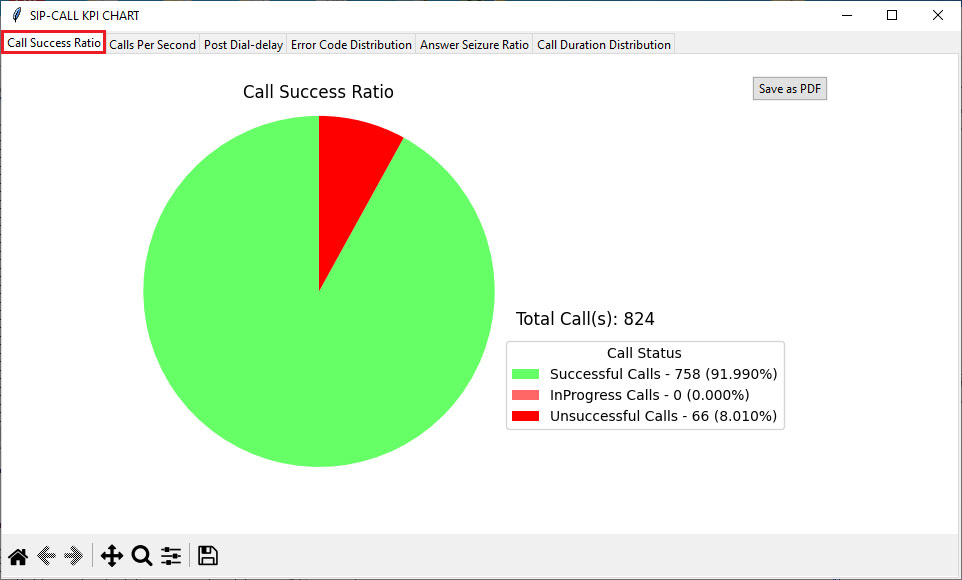
Call Success Ratio:
(graph depicting the counts and percentages of successful and unsuccessful calls.)
KPI Report for SIP Registration
The SIP Registration Summary KPI Report includes KPIs for the following:
Frequently Asked Questions
Resources
Note: PCs which include GL hardware/software require Intel or AMD processors for compliance.
| Item No. | Item Description |
| PKV100 | PacketScan™ - (Online and Offline) |
| PKV101 | PacketScan™ - Offline |
| PKV110 | IMS Protocol Decodes (Optional with PacketScan™) |
| PKV107 | LTE (Long Term Evolution) Analyzer (Optional with PacketScan™) |
| PKV108 | Offline LTE (Long Term Evolution) Analyzer (Optional with PacketScan™) |
| PKV112 | 5G Analyzer (Optional with PacketScan™) |
| PKV113 | Offline 5G Analyzer - Optional with PKV101 (offline PacketScan™) and PKV170 (NetsurveyorWeb™) |
| PKV105 | SIGTRAN (Optional with PacketScan™) |
| PKV106 | Offline SIGTRAN Analyzer (Optional with PacketScan™) |
| PKV103 | IP Based GSM and UMTS Analyzer (Optional with PacketScan™) |
| PKV109 | Offline IP Based GSM and UMTS Analyzer (Optional with PacketScan™) |
| PKV104 | FaxScan™ for SIP and Fax over IP (T.38) |
| PKV400 | TCP Analytics (Optional with PacketScan™) |
| PCD103 | AMR Codec - Narrowband (requires additional license) |
| PCD104 | EVRC Codec (requires additional license) |
| PCD105 | EVRC-B Codec (requires additional license) |
| PCD106 | EVRC-C Codec (requires additional license) |
| PCD107 | AMR Codec - Wideband (requires additional license) |
| PCD108 | Optional Codec - EVS (requires additional license) |
| PCD109 | Optional Codec - Opus (requires additional license) |
| Related Hardware | |
|---|---|
| PKV120 | PacketScan™ HD w/4 x 1GigE |
| PKV120p | PacketScan™ HD w/4 x 1GigE - Portable |
| PKV122 | PacketScan™ HD w/2 x 10GigE |
| PKV123 | PacketRecorder™ HD & PacketRePlay™ HD |
| PKV122p | PacketScan™ HD w/2 x 10 GigE - Portable |
PKV124 |
|
PKV124P |
|
| PKV301 | LAN Switch w/ Mirror Port Accessories Power Adapter (1) |
| Related Software | |
| PKS120 | MAPS™ SIP Emulator |
| PKS102 | RTP Soft Core for RTP Traffic Generation (additional) |
| PKV169 | NetsurveyorWeb™ Lite - Probe Level WebServer, PacketScan™, and Oracle 11g Express Edition; |
| PKV170 | NetsurveyorWeb™(Perpetual License, Unlimited Users/Nodes) – Includes Oracle 11g Standard Edition One and Standard Server-Grade Computing Platform |
| Packet over IP CDR Analysis System | |
| Refer to CDR Buyer's Guide | |
| For T1 E1 Datacom | |
| XX135 | T1 or E1 MLPPP Analyzer |
| OLV135 | Offline T1 or E1 MLPPP Analyzer |
| XX136 | PPP and MLPPP Packet Analysis – Real-time Packet Voice, Video, and Fax Analysis |
| For T3 E3 | |
| XX135 | T3 / E3 PPP Analyzer (GUI) |
| XX136 | PPP and MLPPP Packet Analysis – Real-time Packet Voice, Video, and Fax Analysis |
| For OC3 OC12 | |
| LTS205 LTS215 LTS305 LTS315 |
Protocol Analysis for PoS OC3 / STM1 Packet Data Analysis (PDA) for PoS OC3 / STM1 Protocol Analysis for PoS OC12 / STM4 Packet Data Analysis (PDA) for PoS OC12 / STM4 |
| LTS206 LTS216 LTS306 LTS316 |
Protocol Analysis UMTS OC3 / STM1 Packet Data Analysis (PDA) UMTS OC3 / STM1 Protocol Analysis UMTS OC12 / STM4 Packet Data Analysis (PDA) UMTS OC3 / STM1 |
| Presentations |
| PacketScan™ 5G Protocol Analyzer Presentation |
| PacketScan™ Presentation |
| PacketScan™ HD Presentation |
| TCP Analytics Presentation |
| Webinars |
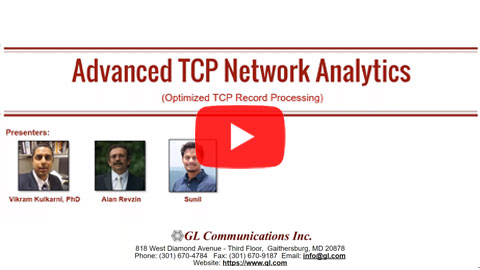  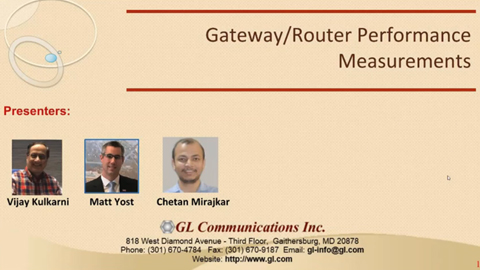
|
